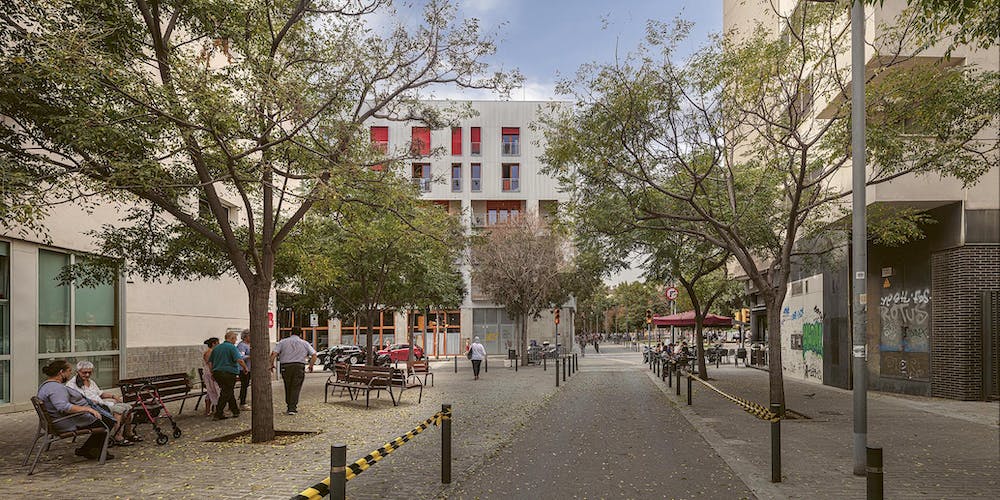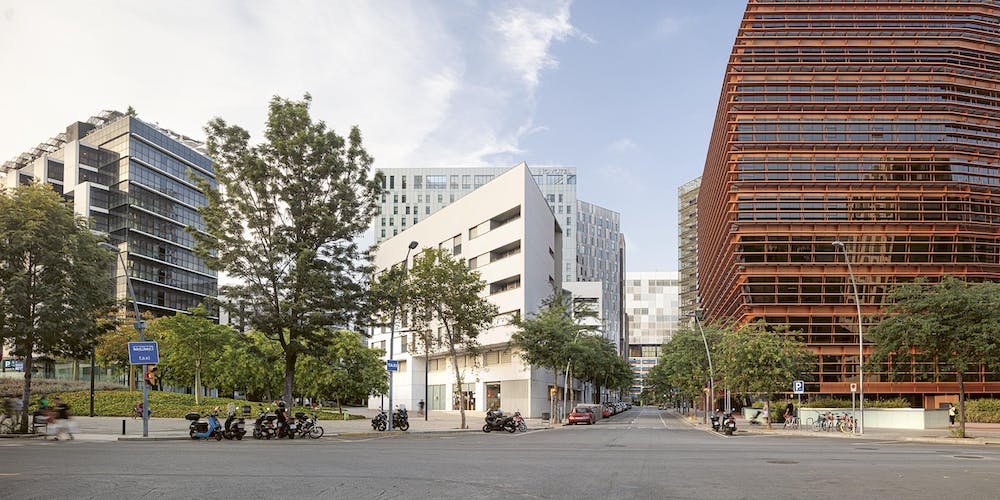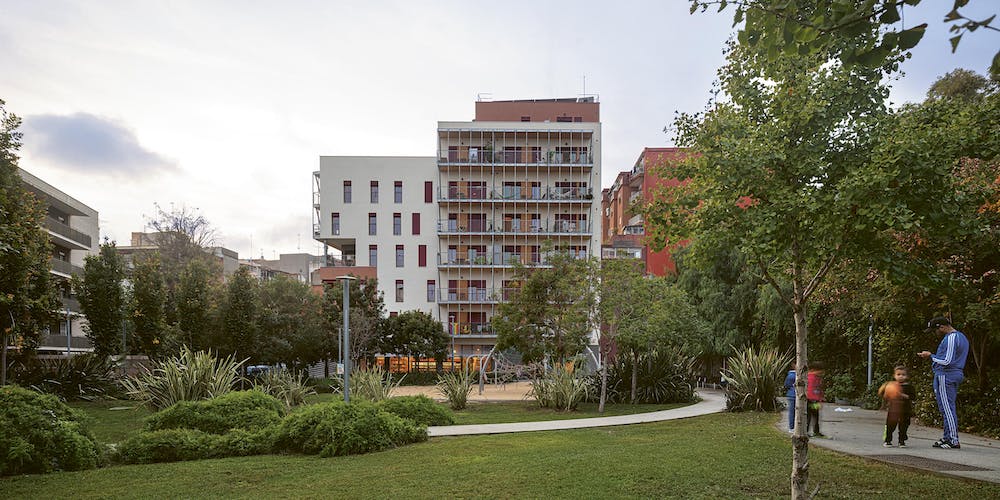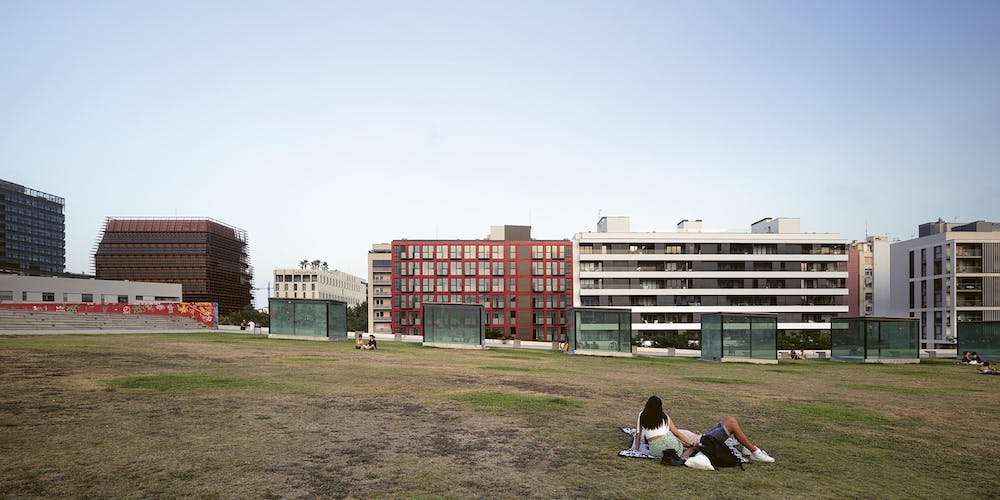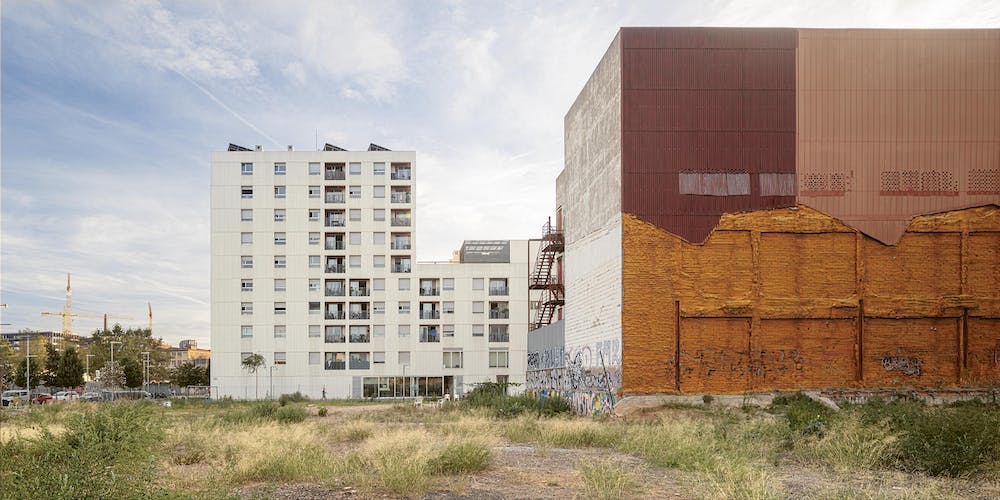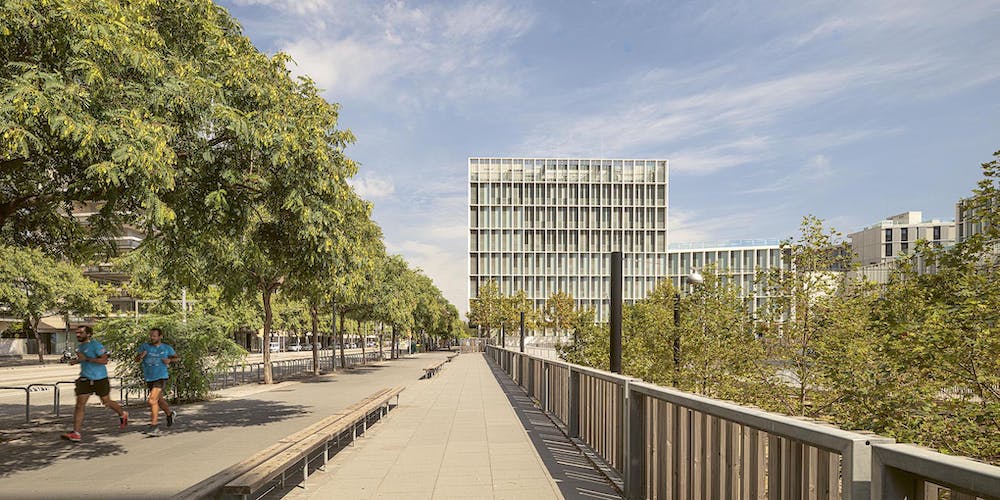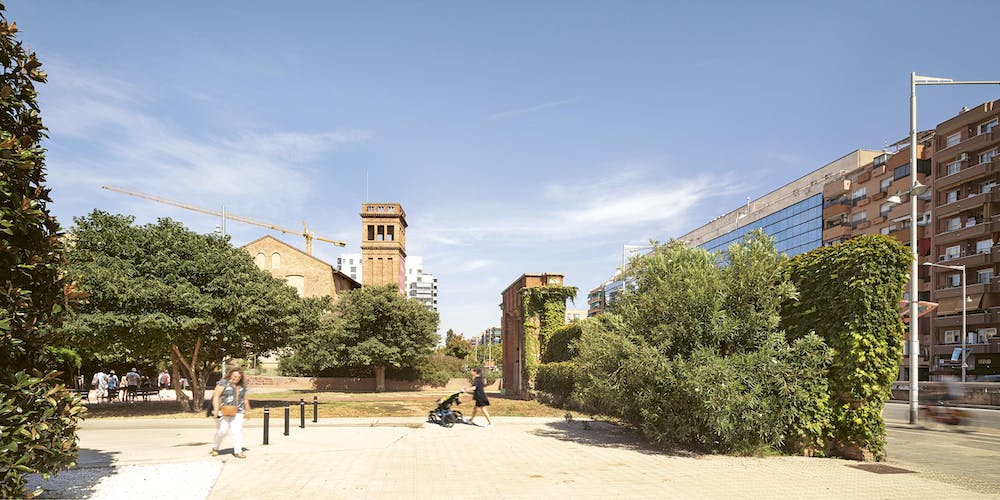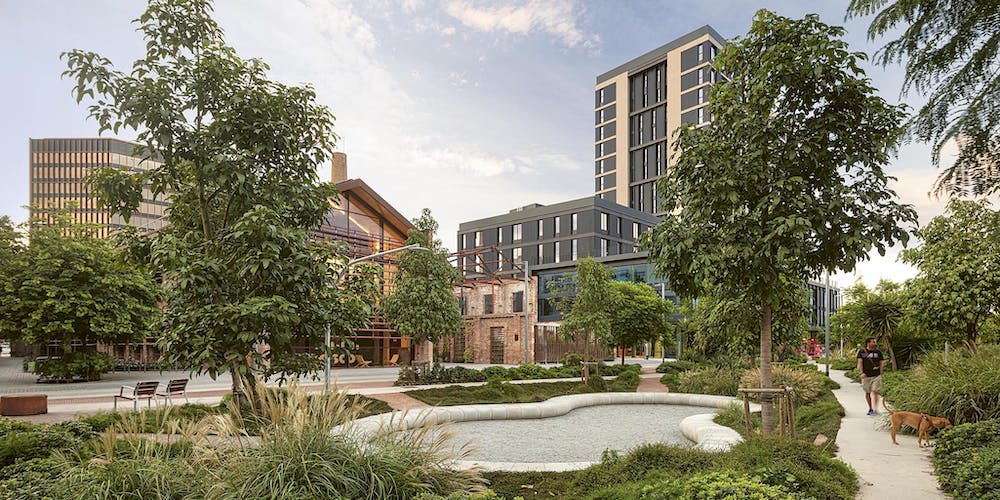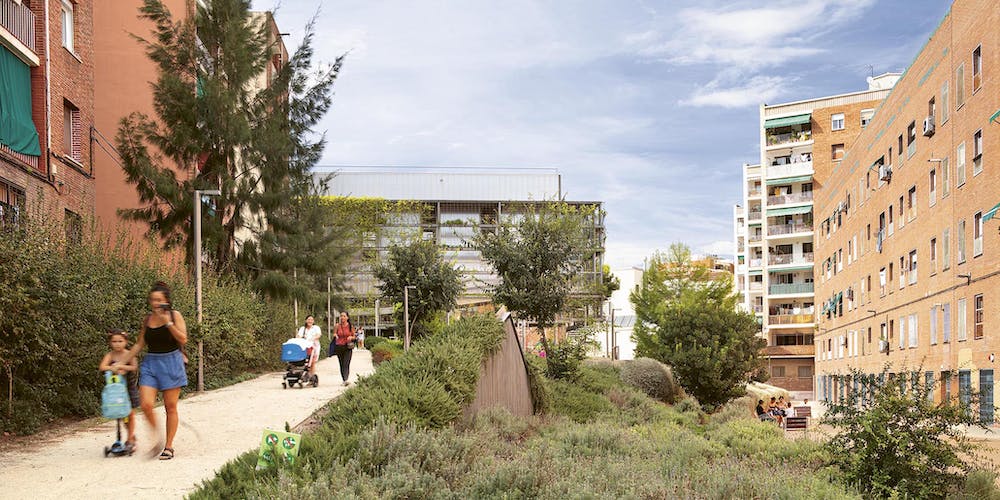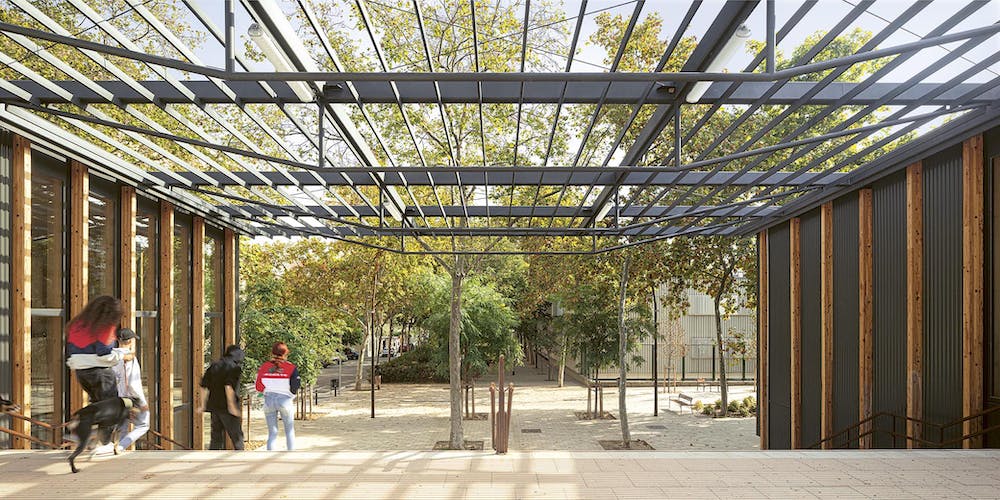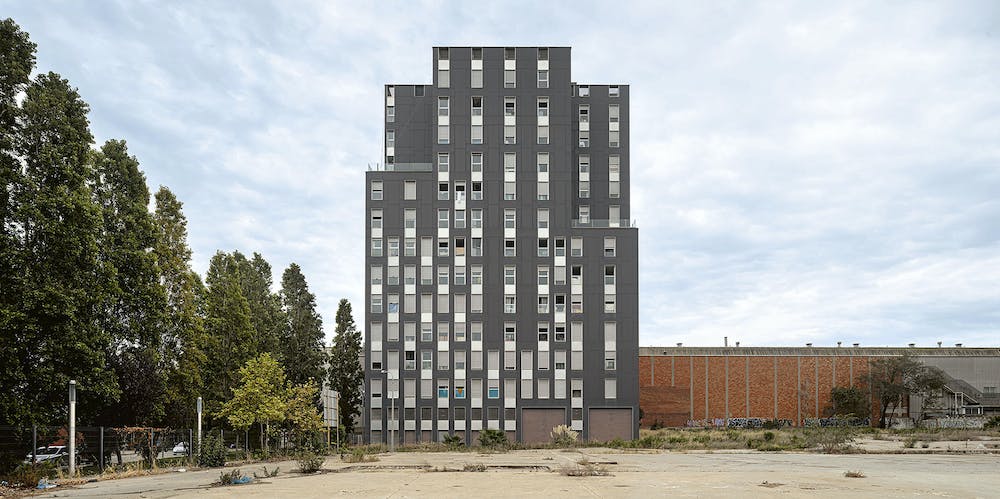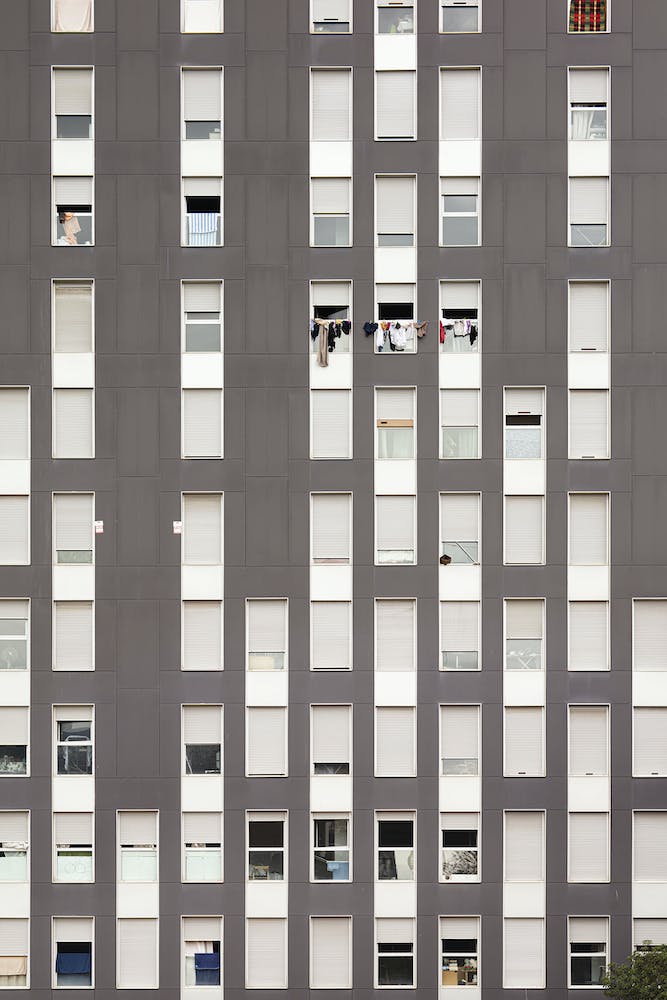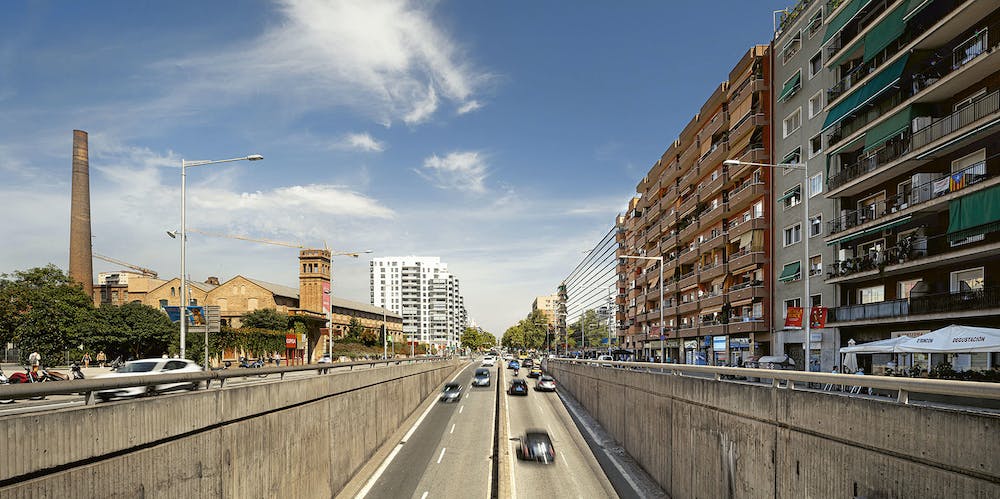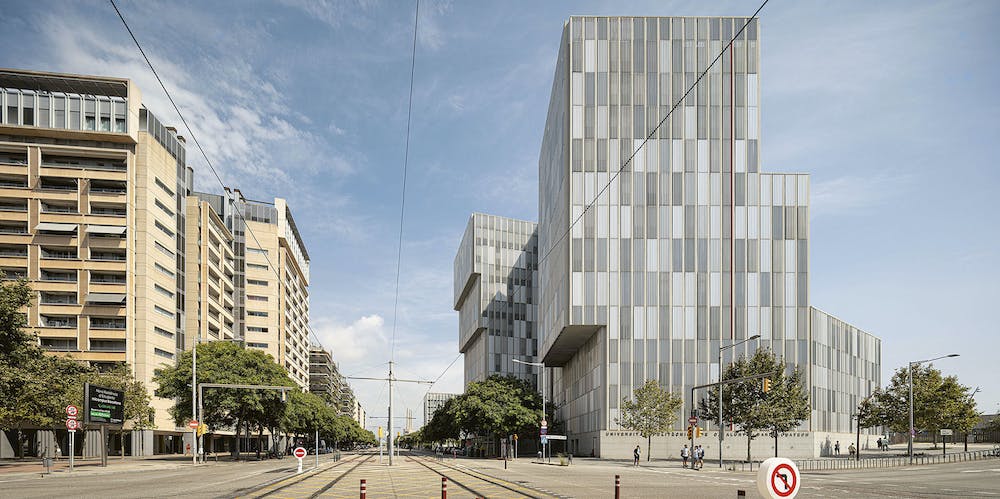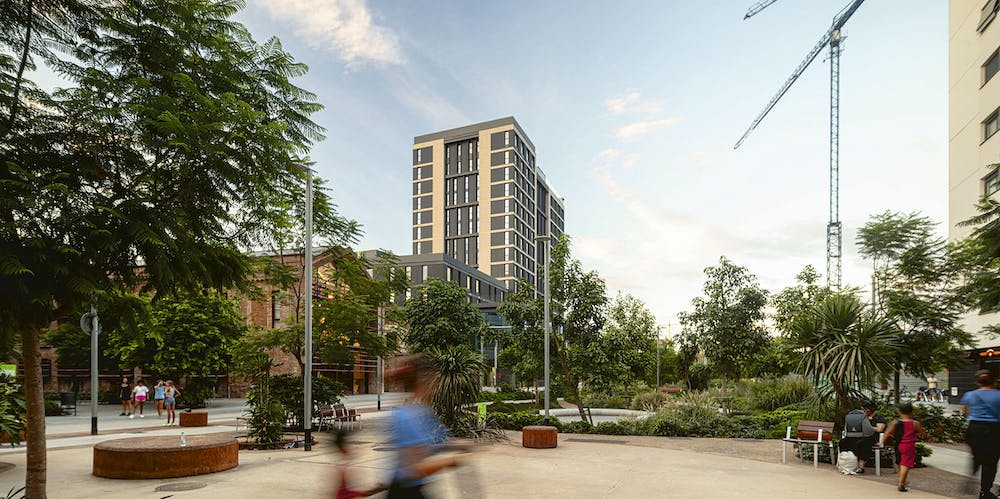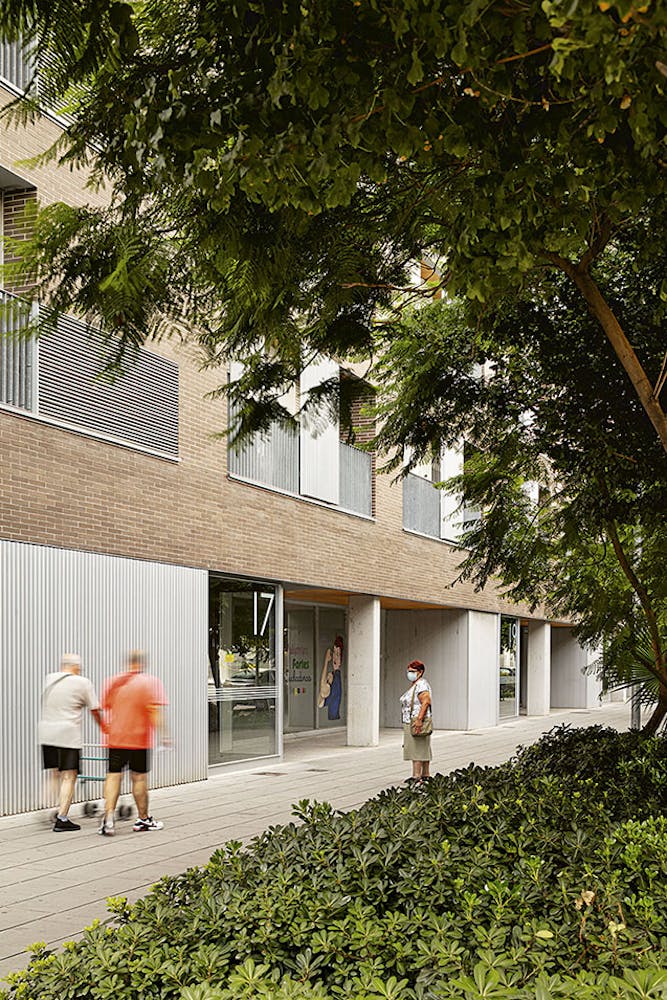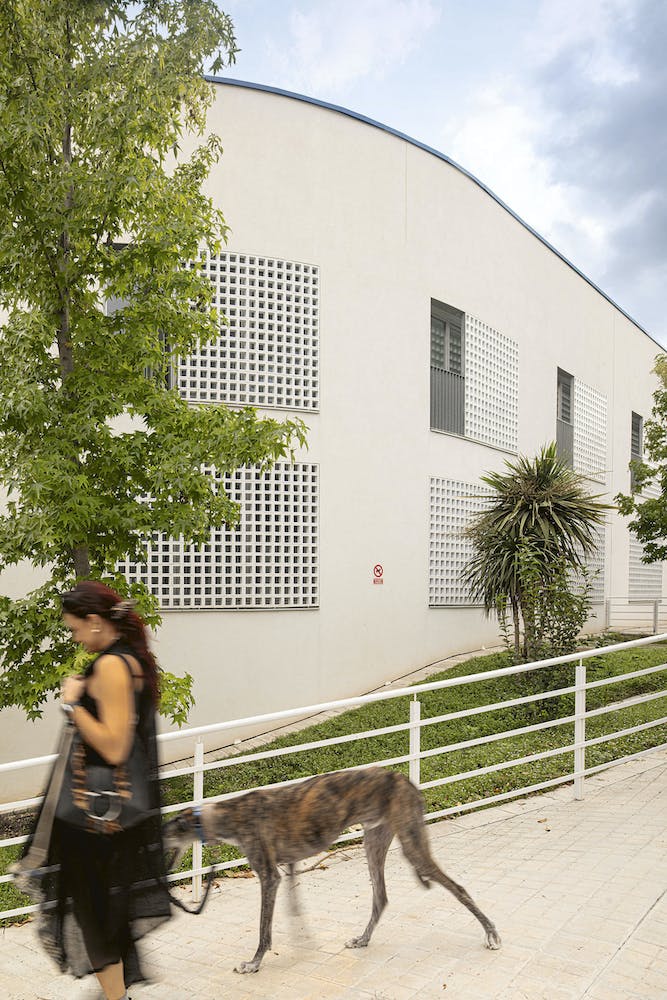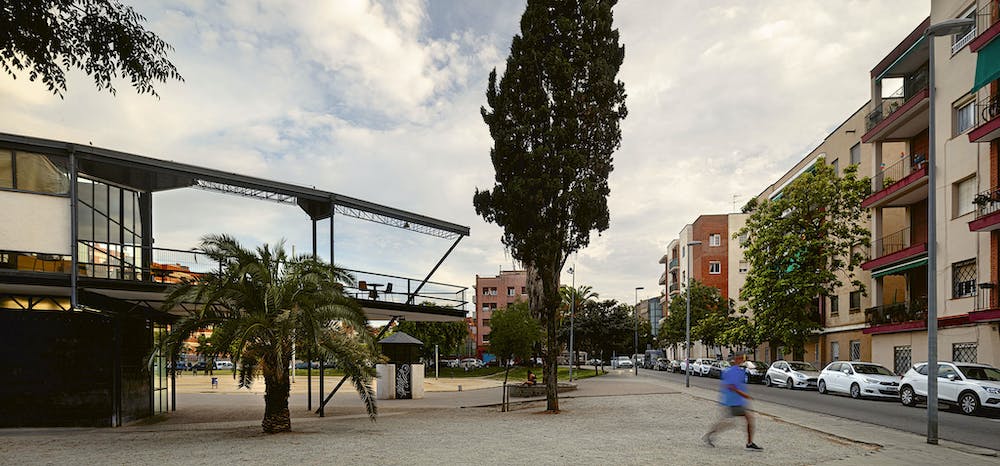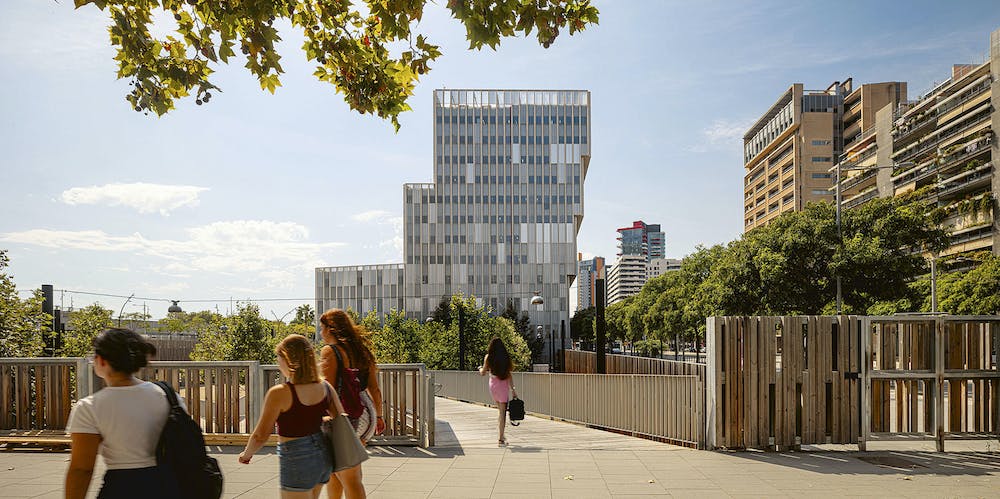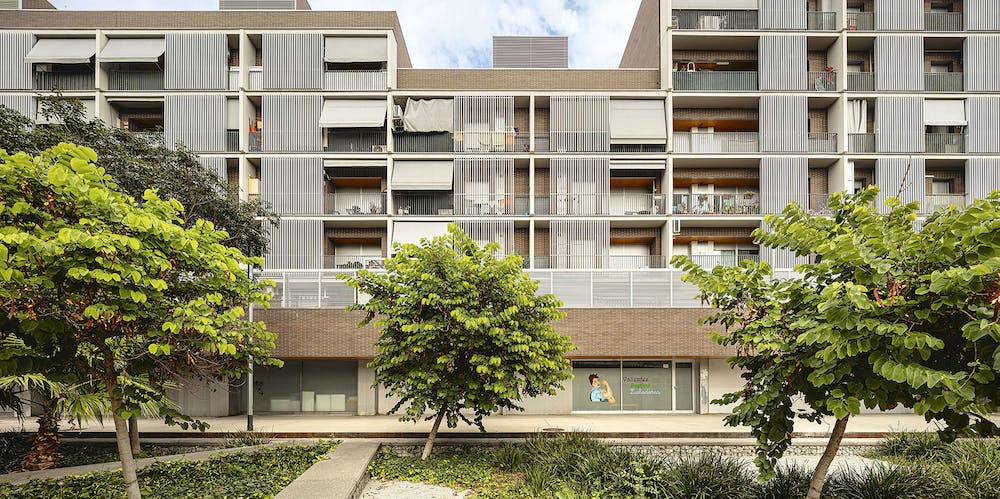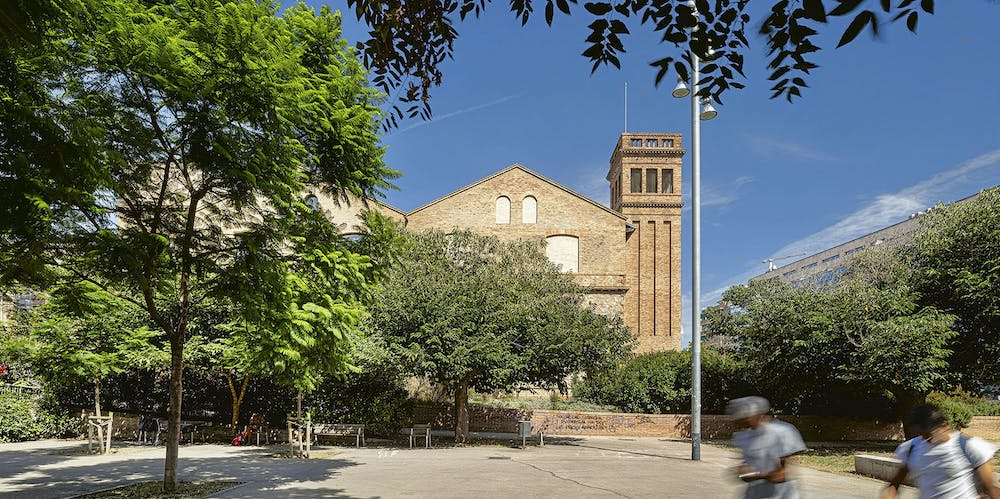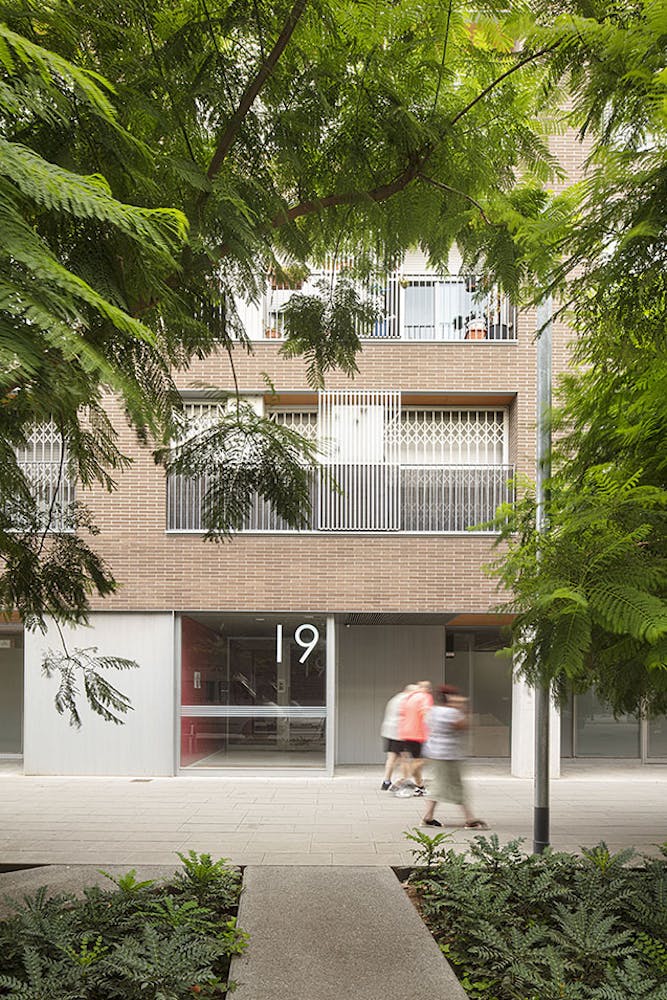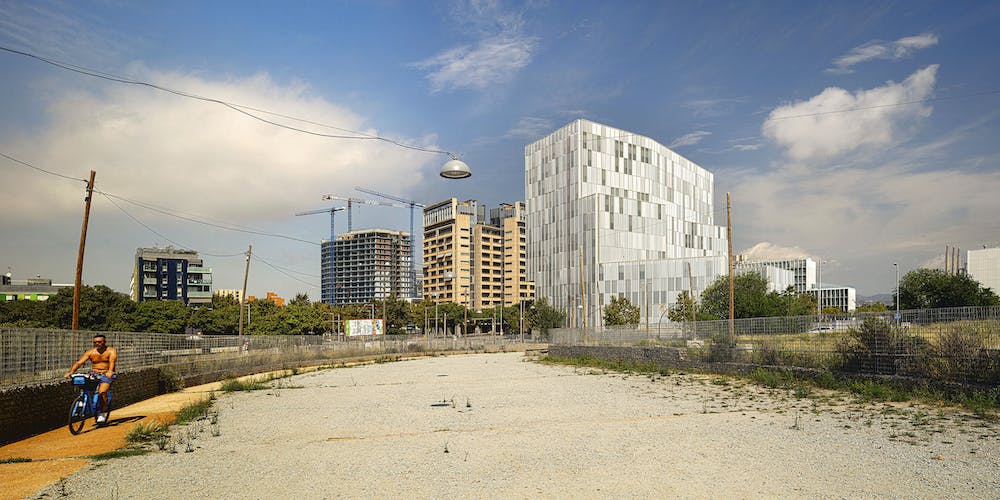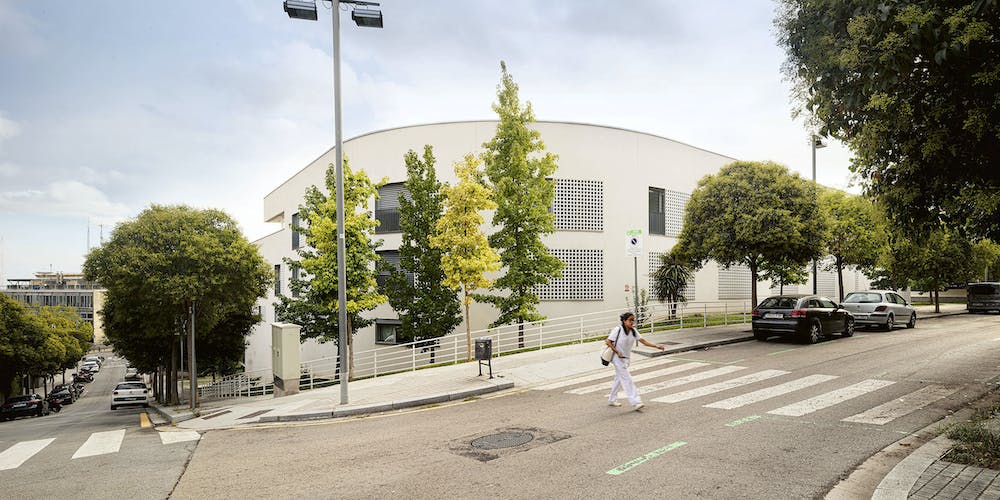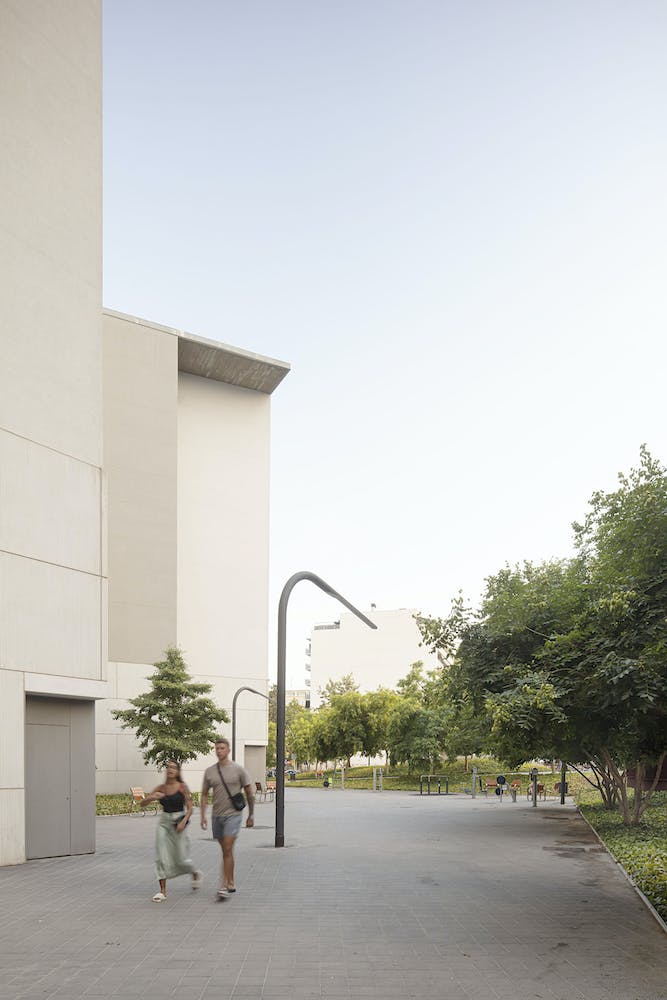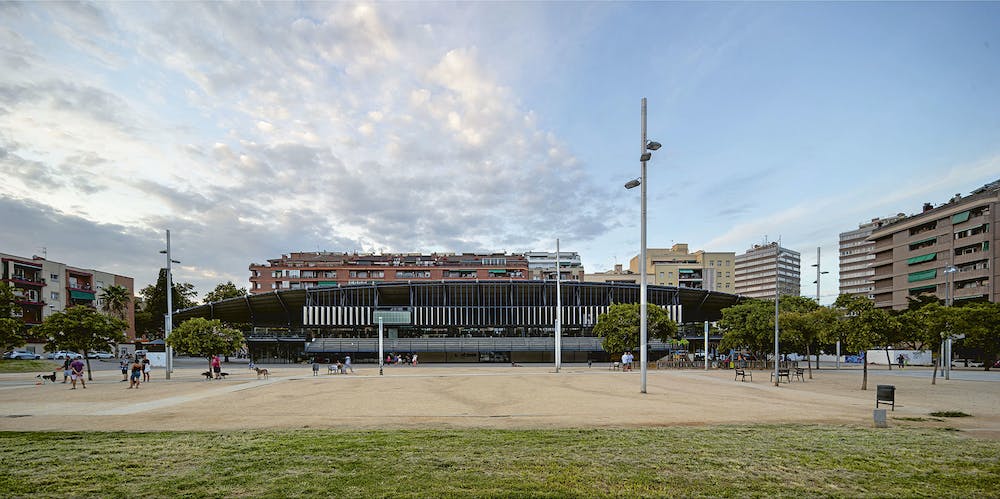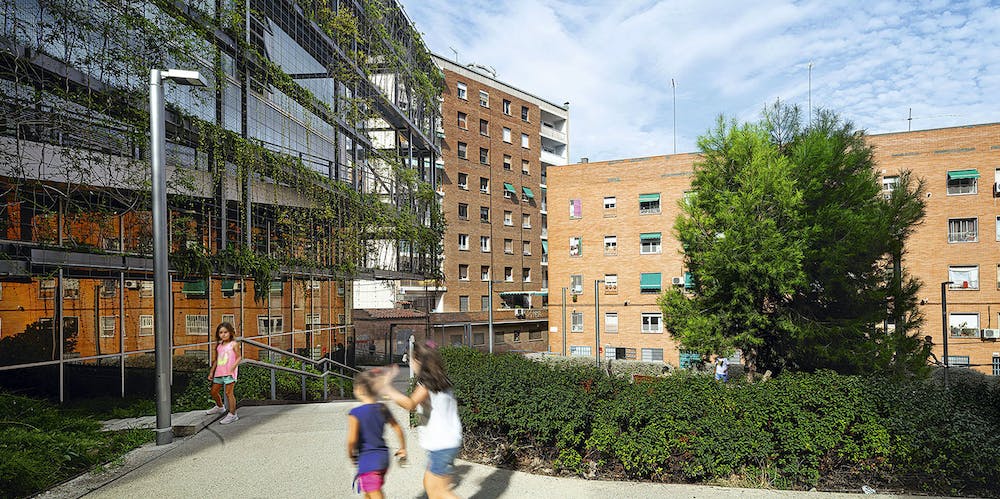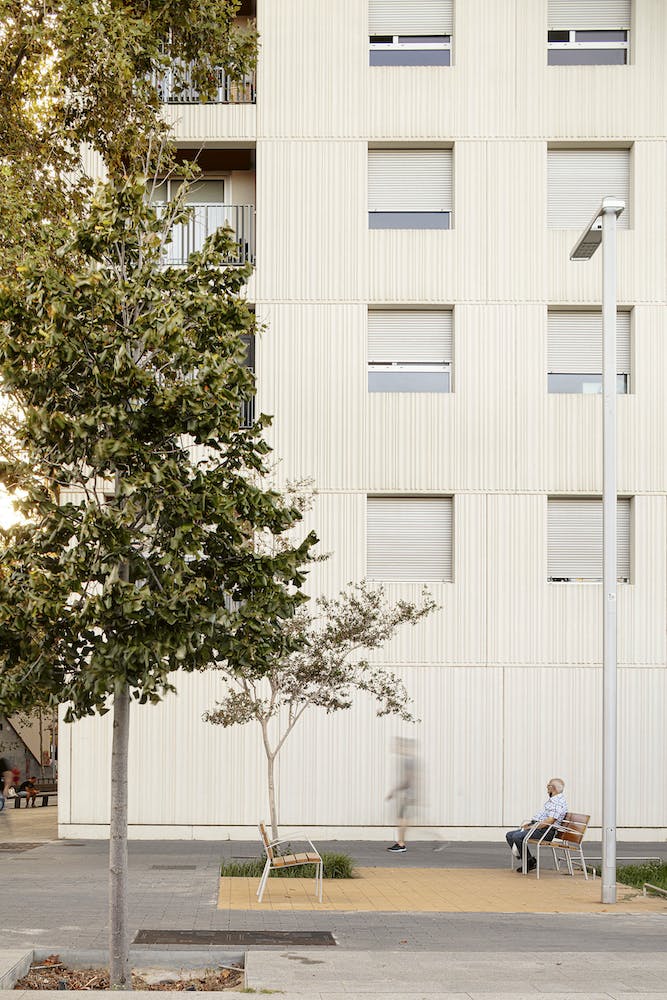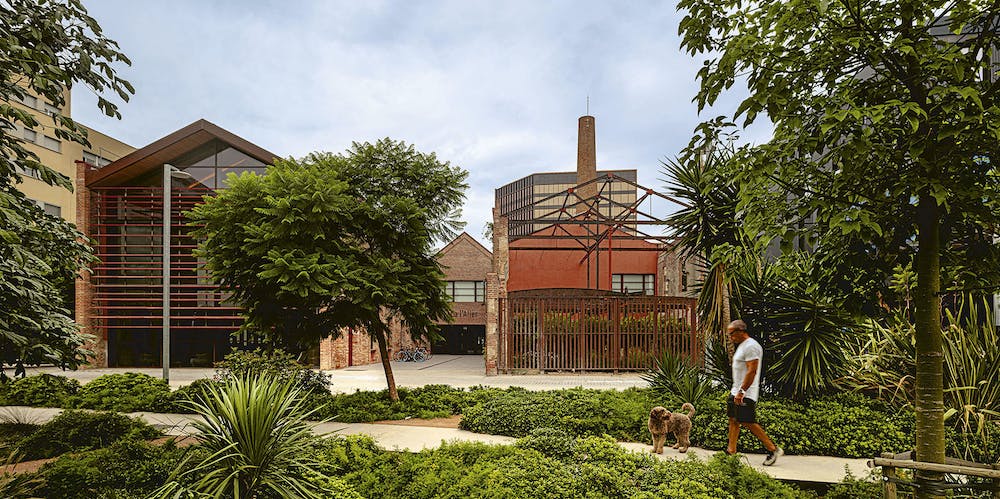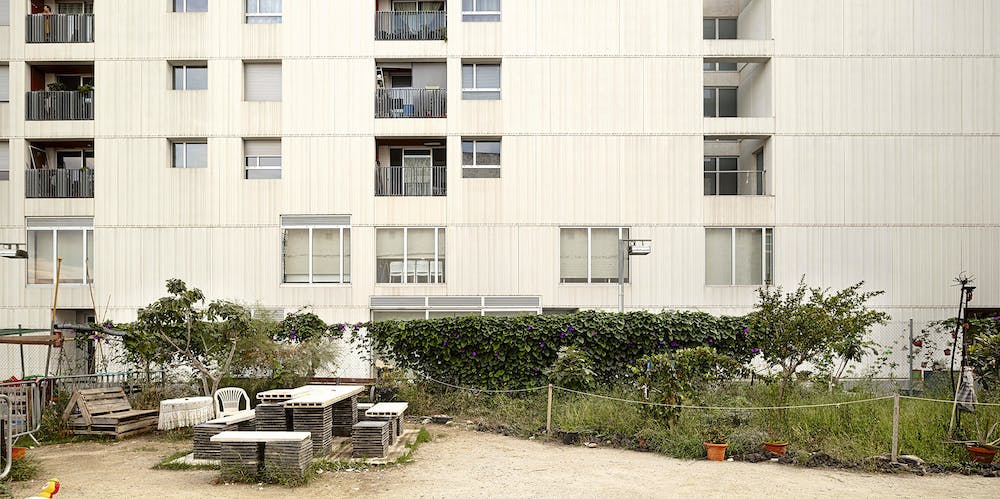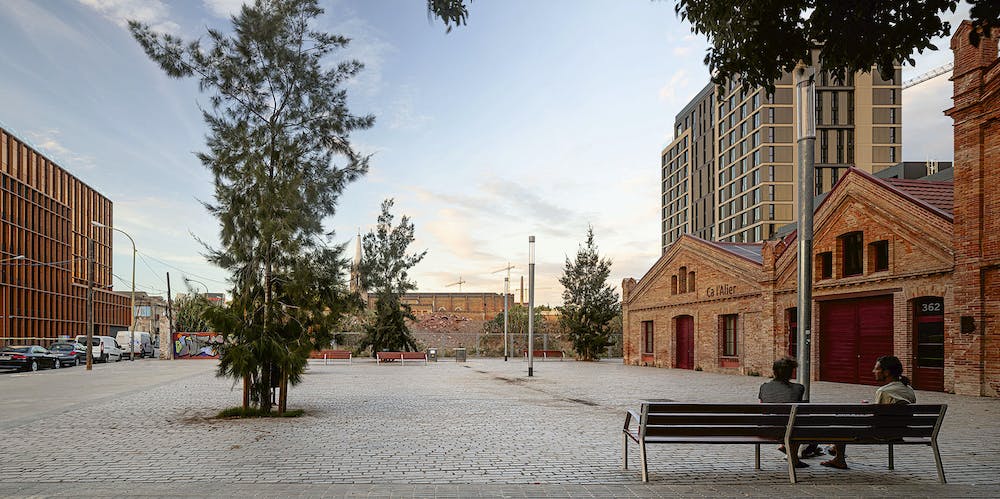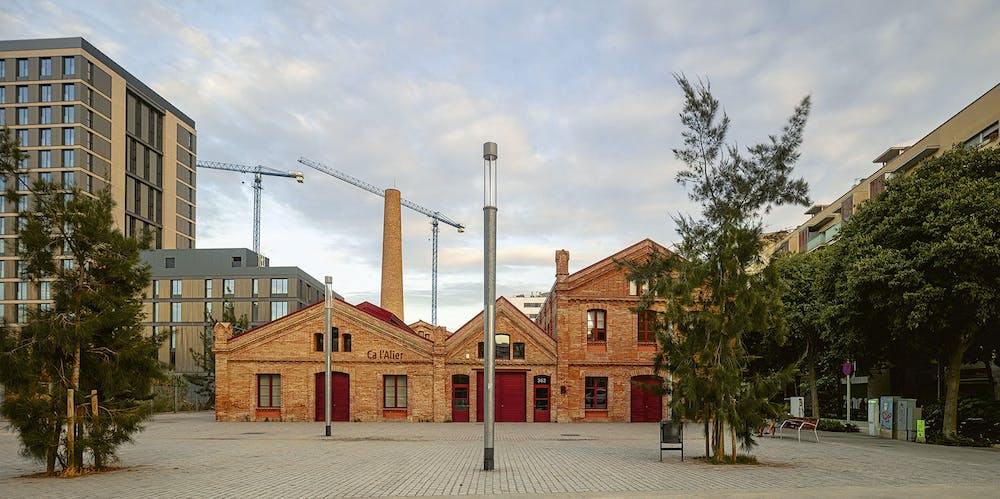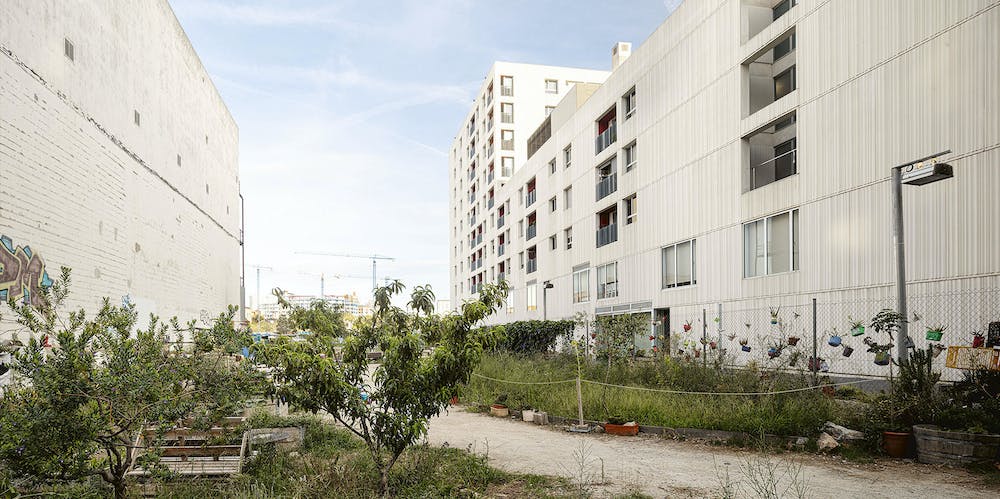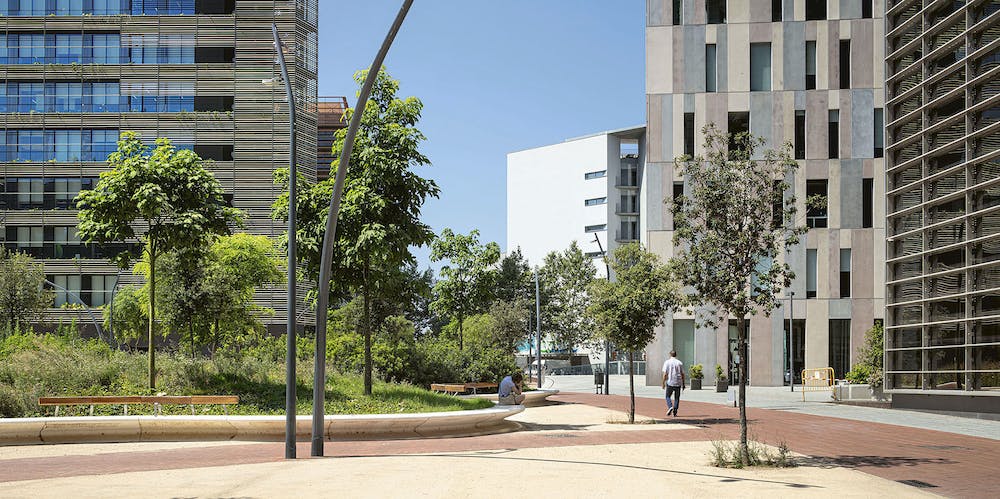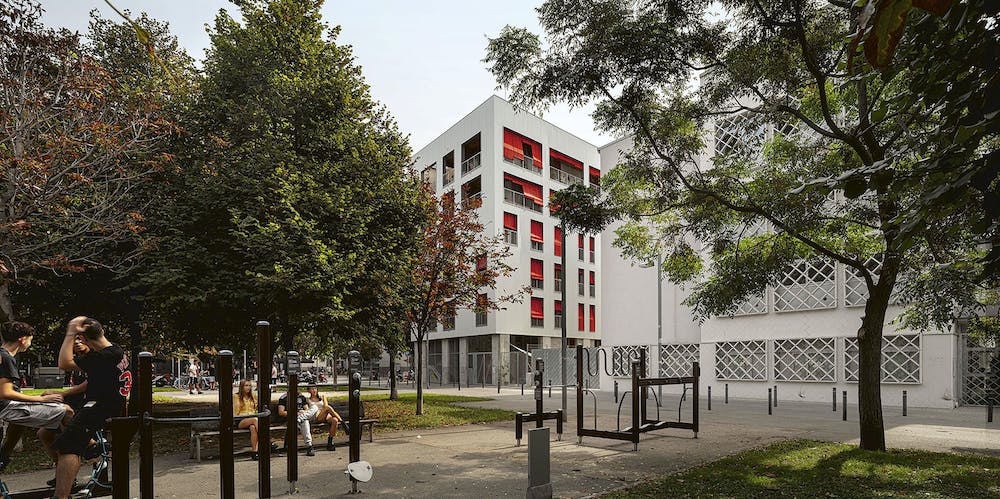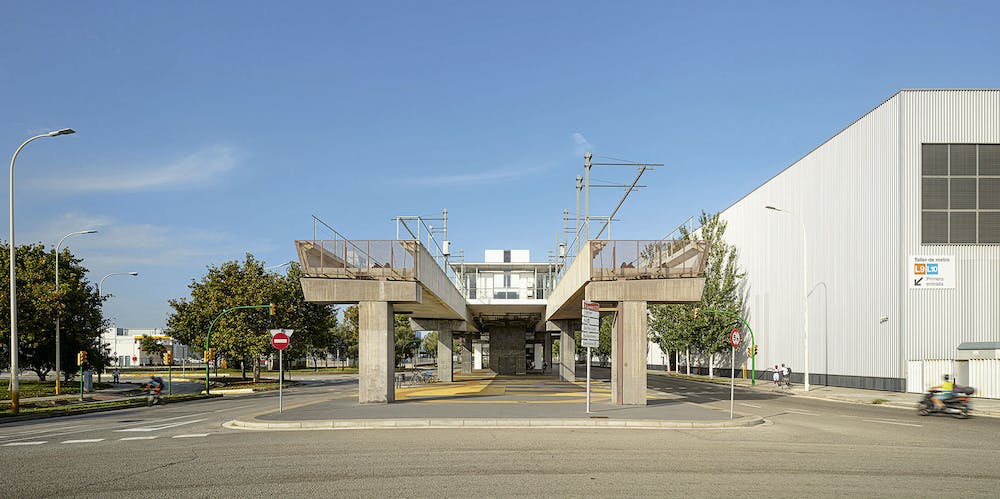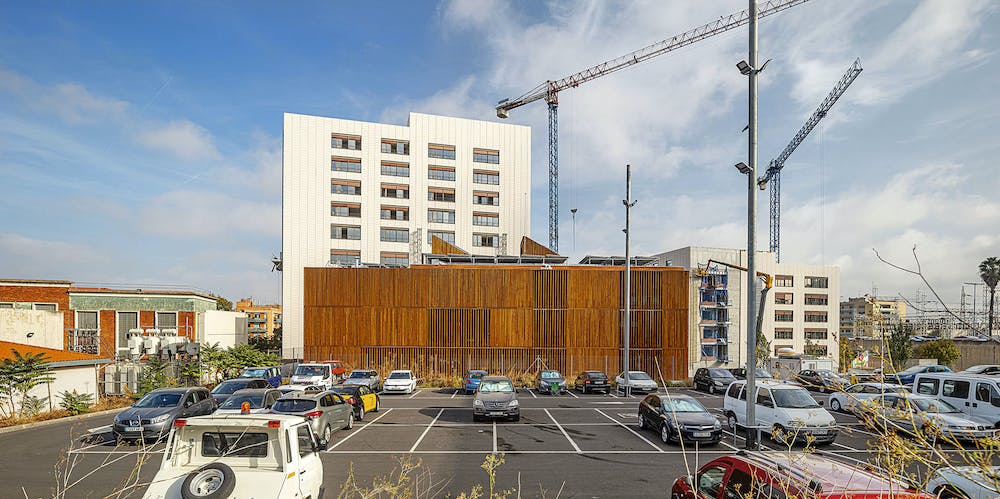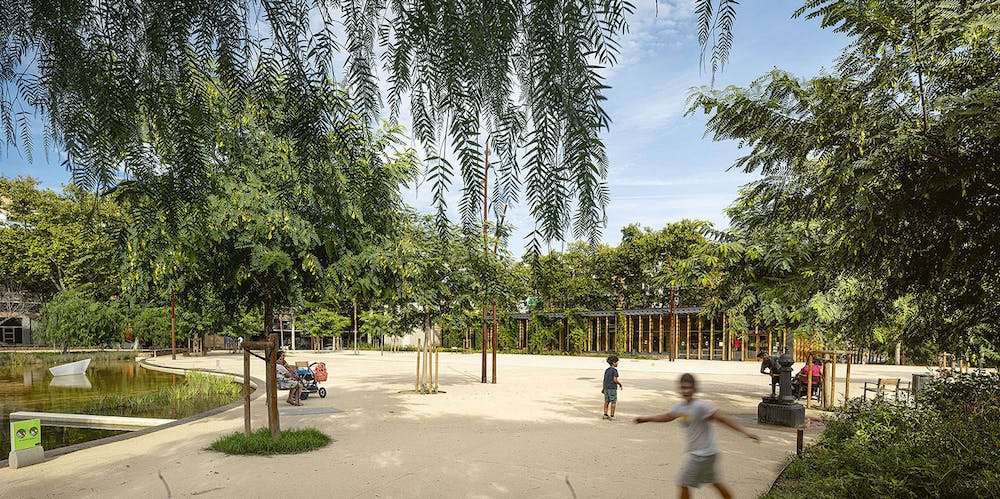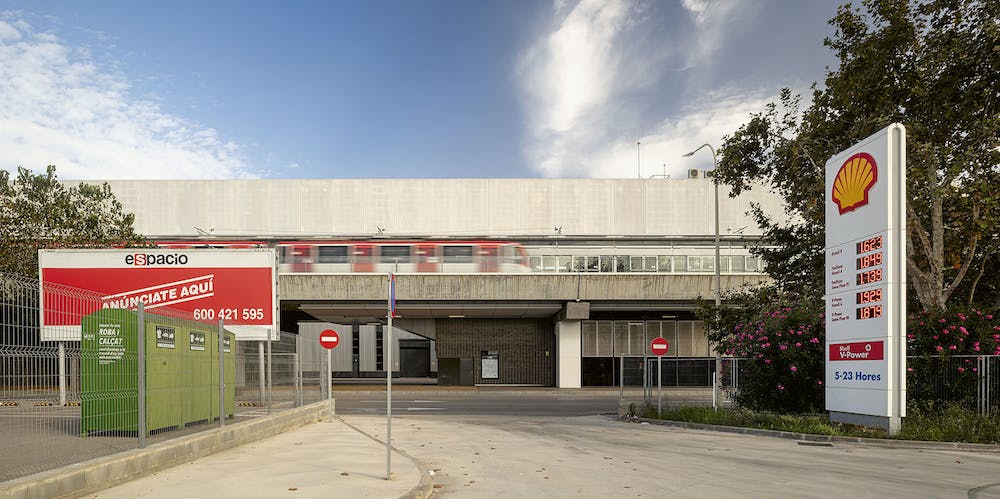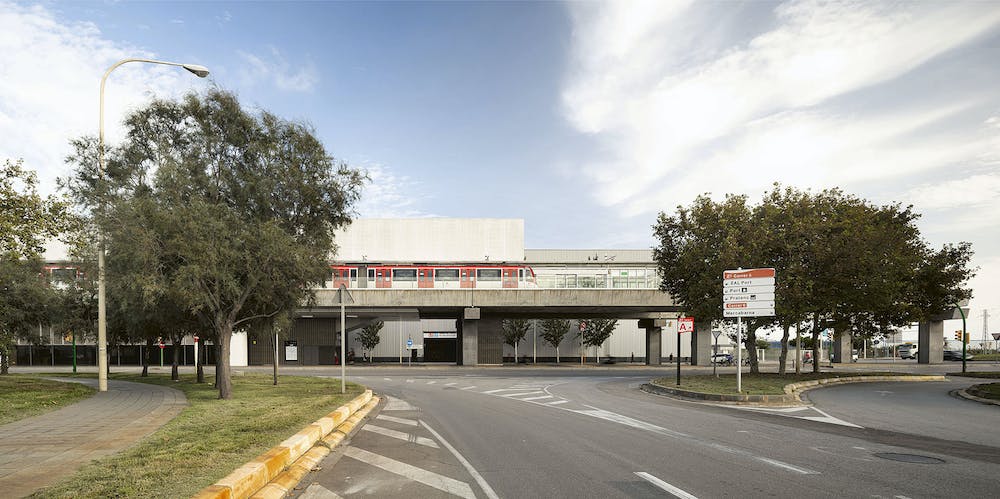Loading
[{"image":{"large":{"url":"https://images.prismic.io/surveybcn/aga_habitatges_bon_pastor_f1_184.jpg?auto=compress,format&rect=0,0,2290,725&w=2290&h=725","localUrl":"/surveyfotografic/common/images/aga_habitatges_bon_pastor_f1_184.jpg","width":2290,"height":725},"scaled":{"url":"https://images.prismic.io/surveybcn/aga_habitatges_bon_pastor_f1_184.jpg?auto=compress,format&rect=0,0,2287,725&w=1000&h=317","localUrl":"/surveyfotografic/common/images/aga_habitatges_bon_pastor_f1_184_s.jpg","width":1000,"height":317}},"project":{"meta":{"url":"/surveyfotografic/en/project/habitatges_bon_pastor_f1"},"body":{"name":"Bon Pastor F1 housing complex","address":"C/Biosca, 15. Sant Andreu"}}},{"image":{"large":{"url":"https://images.prismic.io/surveybcn/9cccdb4f-b4ee-4e2d-93a0-4435e5301ab2_aga_la_balma_habitatge_cooperatiu_219.jpg?auto=compress,format&rect=0,0,2067,1034&w=2067&h=1034","localUrl":"/surveyfotografic/common/images/9cccdb4f-b4ee-4e2d-93a0-4435e5301ab2_aga_la_balma_habitatge_cooperatiu_219.jpg","width":2067,"height":1034},"scaled":{"url":"https://images.prismic.io/surveybcn/9cccdb4f-b4ee-4e2d-93a0-4435e5301ab2_aga_la_balma_habitatge_cooperatiu_219.jpg?auto=compress,format&rect=0,0,2067,1034&w=1000&h=500","localUrl":"/surveyfotografic/common/images/9cccdb4f-b4ee-4e2d-93a0-4435e5301ab2_aga_la_balma_habitatge_cooperatiu_219_s.jpg","width":1000,"height":500}},"project":{"meta":{"url":"/surveyfotografic/en/project/habitatge_cooperatiu_la_balma"},"body":{"name":"La Balma cooperative housing","address":"C/Espronceda, 135. Sant Martí"}}},{"image":{"large":{"url":"https://images.prismic.io/surveybcn/aga_habitatge_gent_gran_glories_i_149.jpg?auto=compress,format&rect=0,0,2523,1261&w=2523&h=1261","localUrl":"/surveyfotografic/common/images/aga_habitatge_gent_gran_glories_i_149.jpg","width":2523,"height":1261},"scaled":{"url":"https://images.prismic.io/surveybcn/aga_habitatge_gent_gran_glories_i_149.jpg?auto=compress,format&rect=0,0,2522,1261&w=1000&h=500","localUrl":"/surveyfotografic/common/images/aga_habitatge_gent_gran_glories_i_149_s.jpg","width":1000,"height":500}},"project":{"meta":{"url":"/surveyfotografic/en/project/habitatges_gent_gran_glories_1"},"body":{"name":"Glòries I assisted housing complex for the elderly","address":"C/Ciutat de Granada, 145. Sant Martí"}}},{"image":{"large":{"url":"https://images.prismic.io/surveybcn/aga_habitatges_sancho_de_avila_ii_175.jpg?auto=compress,format&rect=0,0,2720,1360&w=2720&h=1360","localUrl":"/surveyfotografic/common/images/aga_habitatges_sancho_de_avila_ii_175.jpg","width":2720,"height":1360},"scaled":{"url":"https://images.prismic.io/surveybcn/aga_habitatges_sancho_de_avila_ii_175.jpg?auto=compress,format&rect=0,0,2720,1360&w=1000&h=500","localUrl":"/surveyfotografic/common/images/aga_habitatges_sancho_de_avila_ii_175_s.jpg","width":1000,"height":500}},"project":{"meta":{"url":"/surveyfotografic/en/project/habitatges_sancho_de_avila_2"},"body":{"name":"Sancho de Ávila II housing complex","address":"Pl. Dolors Piera, 6. Sant Martí"}}},{"image":{"large":{"url":"https://images.prismic.io/surveybcn/29f920a9-c349-4c0e-bc3f-4736e12099aa_aga_els_cirerers_208.jpg?auto=compress,format&rect=0,0,2756,1378&w=2756&h=1378","localUrl":"/surveyfotografic/common/images/29f920a9-c349-4c0e-bc3f-4736e12099aa_aga_els_cirerers_208.jpg","width":2756,"height":1378},"scaled":{"url":"https://images.prismic.io/surveybcn/29f920a9-c349-4c0e-bc3f-4736e12099aa_aga_els_cirerers_208.jpg?auto=compress,format&rect=0,0,2756,1378&w=1000&h=500","localUrl":"/surveyfotografic/common/images/29f920a9-c349-4c0e-bc3f-4736e12099aa_aga_els_cirerers_208_s.jpg","width":1000,"height":500}},"project":{"meta":{"url":"/surveyfotografic/en/project/habitatge_cooperatiu_els_cirerers"},"body":{"name":"Els Cirerers cooperative housing","address":"C/Pla dels Cirerers, 2-4. Nou Barris"}}},{"image":{"large":{"url":"https://images.prismic.io/surveybcn/aga_aprop_glories_205.jpg?auto=compress,format&rect=0,0,2766,1383&w=2766&h=1383","localUrl":"/surveyfotografic/common/images/aga_aprop_glories_205.jpg","width":2766,"height":1383},"scaled":{"url":"https://images.prismic.io/surveybcn/aga_aprop_glories_205.jpg?auto=compress,format&rect=0,0,2766,1383&w=1000&h=500","localUrl":"/surveyfotografic/common/images/aga_aprop_glories_205_s.jpg","width":1000,"height":500}},"project":{"meta":{"url":"/surveyfotografic/en/project/aprop_glories"},"body":{"name":"APROP Glòries","address":"C/Irena Sendler, 22. Sant Martí"}}},{"image":{"large":{"url":"https://images.prismic.io/surveybcn/aga_ca_l_isidret_161.jpg?auto=compress,format&rect=0,0,2769,1385&w=2769&h=1385","localUrl":"/surveyfotografic/common/images/aga_ca_l_isidret_161.jpg","width":2769,"height":1385},"scaled":{"url":"https://images.prismic.io/surveybcn/aga_ca_l_isidret_161.jpg?auto=compress,format&rect=0,0,2769,1385&w=1000&h=500","localUrl":"/surveyfotografic/common/images/aga_ca_l_isidret_161_s.jpg","width":1000,"height":500}},"project":{"meta":{"url":"/surveyfotografic/en/project/ca_lisidret"},"body":{"name":"Ca l’Isidret","address":"Camí de Ca l’Isidret and c/Paraguai, c/Josep Pla and c/Pere IV. Sant Martí"}}},{"image":{"large":{"url":"https://images.prismic.io/surveybcn/aga_canodrom_72.jpg?auto=compress,format&rect=0,0,3225,1022&w=3225&h=1022","localUrl":"/surveyfotografic/common/images/aga_canodrom_72.jpg","width":3225,"height":1022},"scaled":{"url":"https://images.prismic.io/surveybcn/aga_canodrom_72.jpg?auto=compress,format&rect=0,0,3224,1022&w=1000&h=317","localUrl":"/surveyfotografic/common/images/aga_canodrom_72_s.jpg","width":1000,"height":317}},"project":{"meta":{"url":"/surveyfotografic/en/project/canodrom_meridiana"},"body":{"name":"Canòdrom Meridiana former greyhound stadium","address":"C/Concepció Arenal, 165. Sant Andreu"}}},{"image":{"large":{"url":"https://images.prismic.io/surveybcn/aga_campus_diagonal-besos_390.jpg?auto=compress,format&rect=0,0,2039,1020&w=2039&h=1020","localUrl":"/surveyfotografic/common/images/aga_campus_diagonal-besos_390.jpg","width":2039,"height":1020},"scaled":{"url":"https://images.prismic.io/surveybcn/aga_campus_diagonal-besos_390.jpg?auto=compress,format&rect=0,0,2039,1020&w=1000&h=500","localUrl":"/surveyfotografic/common/images/aga_campus_diagonal-besos_390_s.jpg","width":1000,"height":500}},"project":{"meta":{"url":"/surveyfotografic/en/project/campus_diagonal_besos"},"body":{"name":"Diagonal-Besòs University Campus","address":"Av. Eduard Maristany. Sant Martí"}}},{"image":{"large":{"url":"https://images.prismic.io/surveybcn/aga_emav._can_batllo_24.jpg?auto=compress,format&rect=0,0,2757,1378&w=2757&h=1378","localUrl":"/surveyfotografic/common/images/aga_emav._can_batllo_24.jpg","width":2757,"height":1378},"scaled":{"url":"https://images.prismic.io/surveybcn/aga_emav._can_batllo_24.jpg?auto=compress,format&rect=0,0,2756,1378&w=1000&h=500","localUrl":"/surveyfotografic/common/images/aga_emav._can_batllo_24_s.jpg","width":1000,"height":500}},"project":{"meta":{"url":"/surveyfotografic/en/project/escola_mitjans_audiovisuals"},"body":{"name":"School of Audiovisual Media (EMAV)","address":"Gran via de les Corts Catalanes, 173-175. Sants-Montjuïc"}}},{"image":{"large":{"url":"https://images.prismic.io/surveybcn/aga_cal_alier_456.jpg?auto=compress,format&rect=0,0,2051,1025&w=2051&h=1025","localUrl":"/surveyfotografic/common/images/aga_cal_alier_456.jpg","width":2051,"height":1025},"scaled":{"url":"https://images.prismic.io/surveybcn/aga_cal_alier_456.jpg?auto=compress,format&rect=0,0,2050,1025&w=1000&h=500","localUrl":"/surveyfotografic/common/images/aga_cal_alier_456_s.jpg","width":1000,"height":500}},"project":{"meta":{"url":"/surveyfotografic/en/project/ca_lalier"},"body":{"name":"Ca l'Alier","address":"C/Pere IV, 362. Sant Martí"}}},{"image":{"large":{"url":"https://images.prismic.io/surveybcn/aga_piscina_turo_de_la_peira_43.jpg?auto=compress,format&rect=0,0,2063,1031&w=2063&h=1031","localUrl":"/surveyfotografic/common/images/aga_piscina_turo_de_la_peira_43.jpg","width":2063,"height":1031},"scaled":{"url":"https://images.prismic.io/surveybcn/aga_piscina_turo_de_la_peira_43.jpg?auto=compress,format&rect=0,0,2062,1031&w=1000&h=500","localUrl":"/surveyfotografic/common/images/aga_piscina_turo_de_la_peira_43_s.jpg","width":1000,"height":500}},"project":{"meta":{"url":"/surveyfotografic/en/project/cem_turo_de_la_peira"},"body":{"name":"Turó de la Peira Municipal Sports Centre","address":"C/Sant Iscle, 50. Nou Barris"}}},{"image":{"large":{"url":"https://images.prismic.io/surveybcn/aga_antiga_fabrica__mercedes-benz_471.jpg?auto=compress,format&rect=0,0,2754,1377&w=2754&h=1377","localUrl":"/surveyfotografic/common/images/aga_antiga_fabrica__mercedes-benz_471.jpg","width":2754,"height":1377},"scaled":{"url":"https://images.prismic.io/surveybcn/aga_antiga_fabrica__mercedes-benz_471.jpg?auto=compress,format&rect=0,0,2754,1377&w=1000&h=500","localUrl":"/surveyfotografic/common/images/aga_antiga_fabrica__mercedes-benz_471_s.jpg","width":1000,"height":500}},"project":{"meta":{"url":"/surveyfotografic/en/project/antiga_fabrica_mercedes_benz"},"body":{"name":"Old Mercedes-Benz factory","address":"C/Sant Adrià, 67. Sant Andreu"}}},{"image":{"large":{"url":"https://images.prismic.io/surveybcn/aga_parc_de_la_placa_de_soller_232.jpg?auto=compress,format&rect=0,0,2080,1040&w=2080&h=1040","localUrl":"/surveyfotografic/common/images/aga_parc_de_la_placa_de_soller_232.jpg","width":2080,"height":1040},"scaled":{"url":"https://images.prismic.io/surveybcn/aga_parc_de_la_placa_de_soller_232.jpg?auto=compress,format&rect=0,0,2080,1040&w=1000&h=500","localUrl":"/surveyfotografic/common/images/aga_parc_de_la_placa_de_soller_232_s.jpg","width":1000,"height":500}},"project":{"meta":{"url":"/surveyfotografic/en/project/parc_placa_soller"},"body":{"name":"Plaça de Sóller park","address":"Pl. Sóller, 1. Nou Barris"}}},{"image":{"large":{"url":"https://images.prismic.io/surveybcn/aga_bibliotecgarcia_marquez_58.jpg?auto=compress,format&rect=0,0,1912,955&w=1912&h=955","localUrl":"/surveyfotografic/common/images/aga_bibliotecgarcia_marquez_58.jpg","width":1912,"height":955},"scaled":{"url":"https://images.prismic.io/surveybcn/aga_bibliotecgarcia_marquez_58.jpg?auto=compress,format&rect=0,0,1912,954&w=1000&h=499","localUrl":"/surveyfotografic/common/images/aga_bibliotecgarcia_marquez_58_s.jpg","width":1000,"height":499}},"project":{"meta":{"url":"/surveyfotografic/en/project/biblioteca_gabriel_garcia_marquez"},"body":{"name":"Gabriel García Márquez Library","address":"C/Treball, 219. Sant Martí"}}},{"image":{"large":{"url":"https://images.prismic.io/surveybcn/aga_poliesportiu_camp_del_ferro_49.jpg?auto=compress,format&rect=0,0,2759,1380&w=2759&h=1380","localUrl":"/surveyfotografic/common/images/aga_poliesportiu_camp_del_ferro_49.jpg","width":2759,"height":1380},"scaled":{"url":"https://images.prismic.io/surveybcn/aga_poliesportiu_camp_del_ferro_49.jpg?auto=compress,format&rect=0,0,2759,1380&w=1000&h=500","localUrl":"/surveyfotografic/common/images/aga_poliesportiu_camp_del_ferro_49_s.jpg","width":1000,"height":500}},"project":{"meta":{"url":"/surveyfotografic/en/project/camp_del_ferro"},"body":{"name":"Camp del Ferro Municipal Sports Centre","address":"Pl. d'Albert Badia i Mur, 1. Sant Andreu"}}},{"image":{"large":{"url":"https://images.prismic.io/surveybcn/aga_porta_trinitat_86.jpg?auto=compress,format&rect=0,0,1912,955&w=1912&h=955","localUrl":"/surveyfotografic/common/images/aga_porta_trinitat_86.jpg","width":1912,"height":955},"scaled":{"url":"https://images.prismic.io/surveybcn/aga_porta_trinitat_86.jpg?auto=compress,format&rect=0,0,1912,954&w=1000&h=499","localUrl":"/surveyfotografic/common/images/aga_porta_trinitat_86_s.jpg","width":1000,"height":499}},"project":{"meta":{"url":"/surveyfotografic/en/project/porta_trinitat"},"body":{"name":"Porta Trinitat","address":"Ctra. Ribes, 51-65. Sant Andreu"}}},{"image":{"large":{"url":"https://images.prismic.io/surveybcn/aga_habitatge_social_tanger_02_137.jpg?auto=compress,format&rect=0,0,1912,955&w=1912&h=955","localUrl":"/surveyfotografic/common/images/aga_habitatge_social_tanger_02_137.jpg","width":1912,"height":955},"scaled":{"url":"https://images.prismic.io/surveybcn/aga_habitatge_social_tanger_02_137.jpg?auto=compress,format&rect=0,0,1912,954&w=1000&h=499","localUrl":"/surveyfotografic/common/images/aga_habitatge_social_tanger_02_137_s.jpg","width":1000,"height":499}},"project":{"meta":{"url":"/surveyfotografic/en/project/habitatges_socials_tanger"},"body":{"name":"Tànger social housing complex","address":"C/Tànger, 40. Sant Martí"}}},{"image":{"large":{"url":"https://images.prismic.io/surveybcn/aga_encuny7_193.jpg?auto=compress,format&rect=0,0,1912,955&w=1912&h=955","localUrl":"/surveyfotografic/common/images/aga_encuny7_193.jpg","width":1912,"height":955},"scaled":{"url":"https://images.prismic.io/surveybcn/aga_encuny7_193.jpg?auto=compress,format&rect=0,0,1912,954&w=1000&h=499","localUrl":"/surveyfotografic/common/images/aga_encuny7_193_s.jpg","width":1000,"height":499}},"project":{"meta":{"url":"/surveyfotografic/en/project/habitatges_encuny"},"body":{"name":"Encuny 7 housing block","address":"C/Encuny, 7. Sants-Montjuïc"}}},{"image":{"large":{"url":"https://images.prismic.io/surveybcn/aga_centre_esportiu_municipal_turo_de_la_peira_44.jpg?auto=compress,format&rect=0,0,2390,1194&w=2390&h=1194","localUrl":"/surveyfotografic/common/images/aga_centre_esportiu_municipal_turo_de_la_peira_44.jpg","width":2390,"height":1194},"scaled":{"url":"https://images.prismic.io/surveybcn/aga_centre_esportiu_municipal_turo_de_la_peira_44.jpg?auto=compress,format&rect=0,0,2388,1194&w=1000&h=500","localUrl":"/surveyfotografic/common/images/aga_centre_esportiu_municipal_turo_de_la_peira_44_s.jpg","width":1000,"height":500}},"project":{"meta":{"url":"/surveyfotografic/en/project/cem_turo_de_la_peira"},"body":{"name":"Turó de la Peira Municipal Sports Centre","address":"C/Sant Iscle, 50. Nou Barris"}}},{"image":{"large":{"url":"https://images.prismic.io/surveybcn/aga_habitatges_sancho_d_avila_ii_02_177.jpg?auto=compress,format&rect=0,0,1660,2489&w=1660&h=2489","localUrl":"/surveyfotografic/common/images/aga_habitatges_sancho_d_avila_ii_02_177.jpg","width":1660,"height":2489},"scaled":{"url":"https://images.prismic.io/surveybcn/aga_habitatges_sancho_d_avila_ii_02_177.jpg?auto=compress,format&rect=0,0,1660,2489&w=667&h=1000","localUrl":"/surveyfotografic/common/images/aga_habitatges_sancho_d_avila_ii_02_177_s.jpg","width":667,"height":1000}},"project":{"meta":{"url":"/surveyfotografic/en/project/habitatges_sancho_de_avila_2"},"body":{"name":"Sancho de Ávila II housing complex","address":"Pl. Dolors Piera, 6. Sant Martí"}}},{"image":{"large":{"url":"https://images.prismic.io/surveybcn/aga_habitatges_sancho_d_avila_ii_04_179.jpg?auto=compress,format&rect=0,0,2390,1194&w=2390&h=1194","localUrl":"/surveyfotografic/common/images/aga_habitatges_sancho_d_avila_ii_04_179.jpg","width":2390,"height":1194},"scaled":{"url":"https://images.prismic.io/surveybcn/aga_habitatges_sancho_d_avila_ii_04_179.jpg?auto=compress,format&rect=0,0,2388,1194&w=1000&h=500","localUrl":"/surveyfotografic/common/images/aga_habitatges_sancho_d_avila_ii_04_179_s.jpg","width":1000,"height":500}},"project":{"meta":{"url":"/surveyfotografic/en/project/habitatges_sancho_de_avila_2"},"body":{"name":"Sancho de Ávila II housing complex","address":"Pl. Dolors Piera, 6. Sant Martí"}}},{"image":{"large":{"url":"https://images.prismic.io/surveybcn/aga_encuny7_04_196.jpg?auto=compress,format&rect=0,0,1911,955&w=1911&h=955","localUrl":"/surveyfotografic/common/images/aga_encuny7_04_196.jpg","width":1911,"height":955},"scaled":{"url":"https://images.prismic.io/surveybcn/aga_encuny7_04_196.jpg?auto=compress,format&rect=0,0,1910,955&w=1000&h=500","localUrl":"/surveyfotografic/common/images/aga_encuny7_04_196_s.jpg","width":1000,"height":500}},"project":{"meta":{"url":"/surveyfotografic/en/project/habitatges_encuny"},"body":{"name":"Encuny 7 housing block","address":"C/Encuny, 7. Sants-Montjuïc"}}},{"image":{"large":{"url":"https://images.prismic.io/surveybcn/aga_encuny7_01_194.jpg?auto=compress,format&rect=0,0,1660,2489&w=1660&h=2489","localUrl":"/surveyfotografic/common/images/aga_encuny7_01_194.jpg","width":1660,"height":2489},"scaled":{"url":"https://images.prismic.io/surveybcn/aga_encuny7_01_194.jpg?auto=compress,format&rect=0,0,1660,2489&w=667&h=1000","localUrl":"/surveyfotografic/common/images/aga_encuny7_01_194_s.jpg","width":667,"height":1000}},"project":{"meta":{"url":"/surveyfotografic/en/project/habitatges_encuny"},"body":{"name":"Encuny 7 housing block","address":"C/Encuny, 7. Sants-Montjuïc"}}},{"image":{"large":{"url":"https://images.prismic.io/surveybcn/aga_habitatges_gent_gran_quatre_camins_03_168.jpg?auto=compress,format&rect=0,0,796,1194&w=796&h=1194","localUrl":"/surveyfotografic/common/images/aga_habitatges_gent_gran_quatre_camins_03_168.jpg","width":796,"height":1194},"scaled":{"url":"https://images.prismic.io/surveybcn/aga_habitatges_gent_gran_quatre_camins_03_168.jpg?auto=compress,format&rect=0,0,796,1193&w=667&h=1000","localUrl":"/surveyfotografic/common/images/aga_habitatges_gent_gran_quatre_camins_03_168_s.jpg","width":667,"height":1000}},"project":{"meta":{"url":"/surveyfotografic/en/project/habitatges_gent_gran_quatre_camins"},"body":{"name":"Quatre Camins housing complex for the elderly","address":"C/Vista Bella, 9. Sarrià - Sant Gervasi"}}},{"image":{"large":{"url":"https://images.prismic.io/surveybcn/aga_encuny7_03_195.jpg?auto=compress,format&rect=0,0,1659,2489&w=1659&h=2489","localUrl":"/surveyfotografic/common/images/aga_encuny7_03_195.jpg","width":1659,"height":2489},"scaled":{"url":"https://images.prismic.io/surveybcn/aga_encuny7_03_195.jpg?auto=compress,format&rect=0,0,1659,2487&w=667&h=1000","localUrl":"/surveyfotografic/common/images/aga_encuny7_03_195_s.jpg","width":667,"height":1000}},"project":{"meta":{"url":"/surveyfotografic/en/project/habitatges_encuny"},"body":{"name":"Encuny 7 housing block","address":"C/Encuny, 7. Sants-Montjuïc"}}},{"image":{"large":{"url":"https://images.prismic.io/surveybcn/aga_emav-can_batllo_25.jpg?auto=compress,format&rect=0,0,1912,955&w=1912&h=955","localUrl":"/surveyfotografic/common/images/aga_emav-can_batllo_25.jpg","width":1912,"height":955},"scaled":{"url":"https://images.prismic.io/surveybcn/aga_emav-can_batllo_25.jpg?auto=compress,format&rect=0,0,1912,954&w=1000&h=499","localUrl":"/surveyfotografic/common/images/aga_emav-can_batllo_25_s.jpg","width":1000,"height":499}},"project":{"meta":{"url":"/surveyfotografic/en/project/escola_mitjans_audiovisuals"},"body":{"name":"School of Audiovisual Media (EMAV)","address":"Gran via de les Corts Catalanes, 173-175. Sants-Montjuïc"}}},{"image":{"large":{"url":"https://images.prismic.io/surveybcn/aga_habitatges_gent_gran_gloriesi_150.jpg?auto=compress,format&rect=0,0,2390,1194&w=2390&h=1194","localUrl":"/surveyfotografic/common/images/aga_habitatges_gent_gran_gloriesi_150.jpg","width":2390,"height":1194},"scaled":{"url":"https://images.prismic.io/surveybcn/aga_habitatges_gent_gran_gloriesi_150.jpg?auto=compress,format&rect=0,0,2388,1194&w=1000&h=500","localUrl":"/surveyfotografic/common/images/aga_habitatges_gent_gran_gloriesi_150_s.jpg","width":1000,"height":500}},"project":{"meta":{"url":"/surveyfotografic/en/project/habitatges_gent_gran_glories_1"},"body":{"name":"Glòries I assisted housing complex for the elderly","address":"C/Ciutat de Granada, 145. Sant Martí"}}},{"image":{"large":{"url":"https://images.prismic.io/surveybcn/aga_campus_besos_02_392.jpg?auto=compress,format&rect=0,0,1912,955&w=1912&h=955","localUrl":"/surveyfotografic/common/images/aga_campus_besos_02_392.jpg","width":1912,"height":955},"scaled":{"url":"https://images.prismic.io/surveybcn/aga_campus_besos_02_392.jpg?auto=compress,format&rect=0,0,1912,954&w=1000&h=499","localUrl":"/surveyfotografic/common/images/aga_campus_besos_02_392_s.jpg","width":1000,"height":499}},"project":{"meta":{"url":"/surveyfotografic/en/project/campus_diagonal_besos"},"body":{"name":"Diagonal-Besòs University Campus","address":"Av. Eduard Maristany. Sant Martí"}}},{"image":{"large":{"url":"https://images.prismic.io/surveybcn/aga_els_cirerers_03_211.jpg?auto=compress,format&rect=0,0,2390,1194&w=2390&h=1194","localUrl":"/surveyfotografic/common/images/aga_els_cirerers_03_211.jpg","width":2390,"height":1194},"scaled":{"url":"https://images.prismic.io/surveybcn/aga_els_cirerers_03_211.jpg?auto=compress,format&rect=0,0,2388,1194&w=1000&h=500","localUrl":"/surveyfotografic/common/images/aga_els_cirerers_03_211_s.jpg","width":1000,"height":500}},"project":{"meta":{"url":"/surveyfotografic/en/project/habitatge_cooperatiu_els_cirerers"},"body":{"name":"Els Cirerers cooperative housing","address":"C/Pla dels Cirerers, 2-4. Nou Barris"}}},{"image":{"large":{"url":"https://images.prismic.io/surveybcn/aga_eixos_vers_cristobal_de_moura_270.jpg?auto=compress,format&rect=0,0,1912,955&w=1912&h=955","localUrl":"/surveyfotografic/common/images/aga_eixos_vers_cristobal_de_moura_270.jpg","width":1912,"height":955},"scaled":{"url":"https://images.prismic.io/surveybcn/aga_eixos_vers_cristobal_de_moura_270.jpg?auto=compress,format&rect=0,0,1912,954&w=1000&h=499","localUrl":"/surveyfotografic/common/images/aga_eixos_vers_cristobal_de_moura_270_s.jpg","width":1000,"height":499}},"project":{"meta":{"url":"/surveyfotografic/en/project/cristobal_de_moura_eixos_verds"},"body":{"name":"Green axes: carrer de Cristóbal de Moura","address":"C/Cristóbal de Moura. Sant Martí"}}},{"image":{"large":{"url":"https://images.prismic.io/surveybcn/aga_habitatges_sancho_d_avila_ii_176.jpg?auto=compress,format&rect=0,0,1912,955&w=1912&h=955","localUrl":"/surveyfotografic/common/images/aga_habitatges_sancho_d_avila_ii_176.jpg","width":1912,"height":955},"scaled":{"url":"https://images.prismic.io/surveybcn/aga_habitatges_sancho_d_avila_ii_176.jpg?auto=compress,format&rect=0,0,1912,954&w=1000&h=499","localUrl":"/surveyfotografic/common/images/aga_habitatges_sancho_d_avila_ii_176_s.jpg","width":1000,"height":499}},"project":{"meta":{"url":"/surveyfotografic/en/project/habitatges_sancho_de_avila_2"},"body":{"name":"Sancho de Ávila II housing complex","address":"Pl. Dolors Piera, 6. Sant Martí"}}},{"image":{"large":{"url":"https://images.prismic.io/surveybcn/aga_habitatges_bon_pastor_f1_03_187.jpg?auto=compress,format&rect=0,0,637,955&w=637&h=955","localUrl":"/surveyfotografic/common/images/aga_habitatges_bon_pastor_f1_03_187.jpg","width":637,"height":955},"scaled":{"url":"https://images.prismic.io/surveybcn/aga_habitatges_bon_pastor_f1_03_187.jpg?auto=compress,format&rect=0,0,637,955&w=667&h=1000","localUrl":"/surveyfotografic/common/images/aga_habitatges_bon_pastor_f1_03_187_s.jpg","width":667,"height":1000}},"project":{"meta":{"url":"/surveyfotografic/en/project/habitatges_bon_pastor_f1"},"body":{"name":"Bon Pastor F1 housing complex","address":"C/Biosca, 15. Sant Andreu"}}},{"image":{"large":{"url":"https://images.prismic.io/surveybcn/aga_habitatges_gent_gran_quatre_camins_04_169.jpg?auto=compress,format&rect=0,0,1659,2489&w=1659&h=2489","localUrl":"/surveyfotografic/common/images/aga_habitatges_gent_gran_quatre_camins_04_169.jpg","width":1659,"height":2489},"scaled":{"url":"https://images.prismic.io/surveybcn/aga_habitatges_gent_gran_quatre_camins_04_169.jpg?auto=compress,format&rect=0,0,1659,2487&w=667&h=1000","localUrl":"/surveyfotografic/common/images/aga_habitatges_gent_gran_quatre_camins_04_169_s.jpg","width":667,"height":1000}},"project":{"meta":{"url":"/surveyfotografic/en/project/habitatges_gent_gran_quatre_camins"},"body":{"name":"Quatre Camins housing complex for the elderly","address":"C/Vista Bella, 9. Sarrià - Sant Gervasi"}}},{"image":{"large":{"url":"https://images.prismic.io/surveybcn/aga_els_cirerers_02_210.jpg?auto=compress,format&rect=0,0,796,1194&w=796&h=1194","localUrl":"/surveyfotografic/common/images/aga_els_cirerers_02_210.jpg","width":796,"height":1194},"scaled":{"url":"https://images.prismic.io/surveybcn/aga_els_cirerers_02_210.jpg?auto=compress,format&rect=0,0,796,1193&w=667&h=1000","localUrl":"/surveyfotografic/common/images/aga_els_cirerers_02_210_s.jpg","width":667,"height":1000}},"project":{"meta":{"url":"/surveyfotografic/en/project/habitatge_cooperatiu_els_cirerers"},"body":{"name":"Els Cirerers cooperative housing","address":"C/Pla dels Cirerers, 2-4. Nou Barris"}}},{"image":{"large":{"url":"https://images.prismic.io/surveybcn/aga_canodrom_02_74.jpg?auto=compress,format&rect=0,0,2049,955&w=2049&h=955","localUrl":"/surveyfotografic/common/images/aga_canodrom_02_74.jpg","width":2049,"height":955},"scaled":{"url":"https://images.prismic.io/surveybcn/aga_canodrom_02_74.jpg?auto=compress,format&rect=0,0,2049,955&w=1000&h=466","localUrl":"/surveyfotografic/common/images/aga_canodrom_02_74_s.jpg","width":1000,"height":466}},"project":{"meta":{"url":"/surveyfotografic/en/project/canodrom_meridiana"},"body":{"name":"Canòdrom Meridiana former greyhound stadium","address":"C/Concepció Arenal, 165. Sant Andreu"}}},{"image":{"large":{"url":"https://images.prismic.io/surveybcn/aga_campus_besos_391.jpg?auto=compress,format&rect=0,0,1912,955&w=1912&h=955","localUrl":"/surveyfotografic/common/images/aga_campus_besos_391.jpg","width":1912,"height":955},"scaled":{"url":"https://images.prismic.io/surveybcn/aga_campus_besos_391.jpg?auto=compress,format&rect=0,0,1912,954&w=1000&h=499","localUrl":"/surveyfotografic/common/images/aga_campus_besos_391_s.jpg","width":1000,"height":499}},"project":{"meta":{"url":"/surveyfotografic/en/project/campus_diagonal_besos"},"body":{"name":"Diagonal-Besòs University Campus","address":"Av. Eduard Maristany. Sant Martí"}}},{"image":{"large":{"url":"https://images.prismic.io/surveybcn/aga_habitatges_bon_pastor_f1_04_188.jpg?auto=compress,format&rect=0,0,1912,955&w=1912&h=955","localUrl":"/surveyfotografic/common/images/aga_habitatges_bon_pastor_f1_04_188.jpg","width":1912,"height":955},"scaled":{"url":"https://images.prismic.io/surveybcn/aga_habitatges_bon_pastor_f1_04_188.jpg?auto=compress,format&rect=0,0,1912,954&w=1000&h=499","localUrl":"/surveyfotografic/common/images/aga_habitatges_bon_pastor_f1_04_188_s.jpg","width":1000,"height":499}},"project":{"meta":{"url":"/surveyfotografic/en/project/habitatges_bon_pastor_f1"},"body":{"name":"Bon Pastor F1 housing complex","address":"C/Biosca, 15. Sant Andreu"}}},{"image":{"large":{"url":"https://images.prismic.io/surveybcn/aga_habitatges_bon_pastor_f1_185.jpg?auto=compress,format&rect=0,0,1915,955&w=1915&h=955","localUrl":"/surveyfotografic/common/images/aga_habitatges_bon_pastor_f1_185.jpg","width":1915,"height":955},"scaled":{"url":"https://images.prismic.io/surveybcn/aga_habitatges_bon_pastor_f1_185.jpg?auto=compress,format&rect=0,0,1914,955&w=1000&h=499","localUrl":"/surveyfotografic/common/images/aga_habitatges_bon_pastor_f1_185_s.jpg","width":1000,"height":499}},"project":{"meta":{"url":"/surveyfotografic/en/project/habitatges_bon_pastor_f1"},"body":{"name":"Bon Pastor F1 housing complex","address":"C/Biosca, 15. Sant Andreu"}}},{"image":{"large":{"url":"https://images.prismic.io/surveybcn/aga_emav-can_batllo_02_26.jpg?auto=compress,format&rect=0,0,1912,955&w=1912&h=955","localUrl":"/surveyfotografic/common/images/aga_emav-can_batllo_02_26.jpg","width":1912,"height":955},"scaled":{"url":"https://images.prismic.io/surveybcn/aga_emav-can_batllo_02_26.jpg?auto=compress,format&rect=0,0,1912,954&w=1000&h=499","localUrl":"/surveyfotografic/common/images/aga_emav-can_batllo_02_26_s.jpg","width":1000,"height":499}},"project":{"meta":{"url":"/surveyfotografic/en/project/escola_mitjans_audiovisuals"},"body":{"name":"School of Audiovisual Media (EMAV)","address":"Gran via de les Corts Catalanes, 173-175. Sants-Montjuïc"}}},{"image":{"large":{"url":"https://images.prismic.io/surveybcn/aga_habitatges_bon_pastor_f1_02_186.jpg?auto=compress,format&rect=0,0,637,955&w=637&h=955","localUrl":"/surveyfotografic/common/images/aga_habitatges_bon_pastor_f1_02_186.jpg","width":637,"height":955},"scaled":{"url":"https://images.prismic.io/surveybcn/aga_habitatges_bon_pastor_f1_02_186.jpg?auto=compress,format&rect=0,0,637,955&w=667&h=1000","localUrl":"/surveyfotografic/common/images/aga_habitatges_bon_pastor_f1_02_186_s.jpg","width":667,"height":1000}},"project":{"meta":{"url":"/surveyfotografic/en/project/habitatges_bon_pastor_f1"},"body":{"name":"Bon Pastor F1 housing complex","address":"C/Biosca, 15. Sant Andreu"}}},{"image":{"large":{"url":"https://images.prismic.io/surveybcn/aga_habitatges_sancho_d_avila_ii_05_180.jpg?auto=compress,format&rect=0,0,1659,2489&w=1659&h=2489","localUrl":"/surveyfotografic/common/images/aga_habitatges_sancho_d_avila_ii_05_180.jpg","width":1659,"height":2489},"scaled":{"url":"https://images.prismic.io/surveybcn/aga_habitatges_sancho_d_avila_ii_05_180.jpg?auto=compress,format&rect=0,0,1659,2487&w=667&h=1000","localUrl":"/surveyfotografic/common/images/aga_habitatges_sancho_d_avila_ii_05_180_s.jpg","width":667,"height":1000}},"project":{"meta":{"url":"/surveyfotografic/en/project/habitatges_sancho_de_avila_2"},"body":{"name":"Sancho de Ávila II housing complex","address":"Pl. Dolors Piera, 6. Sant Martí"}}},{"image":{"large":{"url":"https://images.prismic.io/surveybcn/aga_els_cirerers_209.jpg?auto=compress,format&rect=0,0,1912,955&w=1912&h=955","localUrl":"/surveyfotografic/common/images/aga_els_cirerers_209.jpg","width":1912,"height":955},"scaled":{"url":"https://images.prismic.io/surveybcn/aga_els_cirerers_209.jpg?auto=compress,format&rect=0,0,1912,954&w=1000&h=499","localUrl":"/surveyfotografic/common/images/aga_els_cirerers_209_s.jpg","width":1000,"height":499}},"project":{"meta":{"url":"/surveyfotografic/en/project/habitatge_cooperatiu_els_cirerers"},"body":{"name":"Els Cirerers cooperative housing","address":"C/Pla dels Cirerers, 2-4. Nou Barris"}}},{"image":{"large":{"url":"https://images.prismic.io/surveybcn/aga_canodrom_73.jpg?auto=compress,format&rect=0,0,2126,955&w=2126&h=955","localUrl":"/surveyfotografic/common/images/aga_canodrom_73.jpg","width":2126,"height":955},"scaled":{"url":"https://images.prismic.io/surveybcn/aga_canodrom_73.jpg?auto=compress,format&rect=0,0,2126,955&w=1000&h=449","localUrl":"/surveyfotografic/common/images/aga_canodrom_73_s.jpg","width":1000,"height":449}},"project":{"meta":{"url":"/surveyfotografic/en/project/canodrom_meridiana"},"body":{"name":"Canòdrom Meridiana former greyhound stadium","address":"C/Concepció Arenal, 165. Sant Andreu"}}},{"image":{"large":{"url":"https://images.prismic.io/surveybcn/aga_habitatges_gent_gran_gloriesi_02_151.jpg?auto=compress,format&rect=0,0,796,1194&w=796&h=1194","localUrl":"/surveyfotografic/common/images/aga_habitatges_gent_gran_gloriesi_02_151.jpg","width":796,"height":1194},"scaled":{"url":"https://images.prismic.io/surveybcn/aga_habitatges_gent_gran_gloriesi_02_151.jpg?auto=compress,format&rect=0,0,796,1193&w=667&h=1000","localUrl":"/surveyfotografic/common/images/aga_habitatges_gent_gran_gloriesi_02_151_s.jpg","width":667,"height":1000}},"project":{"meta":{"url":"/surveyfotografic/en/project/habitatges_gent_gran_glories_1"},"body":{"name":"Glòries I assisted housing complex for the elderly","address":"C/Ciutat de Granada, 145. Sant Martí"}}},{"image":{"large":{"url":"https://images.prismic.io/surveybcn/aga_habitatges_sancho_d_avila_ii_03_178.jpg?auto=compress,format&rect=0,0,637,955&w=637&h=955","localUrl":"/surveyfotografic/common/images/aga_habitatges_sancho_d_avila_ii_03_178.jpg","width":637,"height":955},"scaled":{"url":"https://images.prismic.io/surveybcn/aga_habitatges_sancho_d_avila_ii_03_178.jpg?auto=compress,format&rect=0,0,637,955&w=667&h=1000","localUrl":"/surveyfotografic/common/images/aga_habitatges_sancho_d_avila_ii_03_178_s.jpg","width":667,"height":1000}},"project":{"meta":{"url":"/surveyfotografic/en/project/habitatges_sancho_de_avila_2"},"body":{"name":"Sancho de Ávila II housing complex","address":"Pl. Dolors Piera, 6. Sant Martí"}}},{"image":{"large":{"url":"https://images.prismic.io/surveybcn/aga_campus_besos_03_393.jpg?auto=compress,format&rect=0,0,2390,1194&w=2390&h=1194","localUrl":"/surveyfotografic/common/images/aga_campus_besos_03_393.jpg","width":2390,"height":1194},"scaled":{"url":"https://images.prismic.io/surveybcn/aga_campus_besos_03_393.jpg?auto=compress,format&rect=0,0,2388,1194&w=1000&h=500","localUrl":"/surveyfotografic/common/images/aga_campus_besos_03_393_s.jpg","width":1000,"height":500}},"project":{"meta":{"url":"/surveyfotografic/en/project/campus_diagonal_besos"},"body":{"name":"Diagonal-Besòs University Campus","address":"Av. Eduard Maristany. Sant Martí"}}},{"image":{"large":{"url":"https://images.prismic.io/surveybcn/aga_habitatges_gent_gran_quatre_camins_02_167.jpg?auto=compress,format&rect=0,0,2390,1194&w=2390&h=1194","localUrl":"/surveyfotografic/common/images/aga_habitatges_gent_gran_quatre_camins_02_167.jpg","width":2390,"height":1194},"scaled":{"url":"https://images.prismic.io/surveybcn/aga_habitatges_gent_gran_quatre_camins_02_167.jpg?auto=compress,format&rect=0,0,2388,1194&w=1000&h=500","localUrl":"/surveyfotografic/common/images/aga_habitatges_gent_gran_quatre_camins_02_167_s.jpg","width":1000,"height":500}},"project":{"meta":{"url":"/surveyfotografic/en/project/habitatges_gent_gran_quatre_camins"},"body":{"name":"Quatre Camins housing complex for the elderly","address":"C/Vista Bella, 9. Sarrià - Sant Gervasi"}}},{"image":{"large":{"url":"https://images.prismic.io/surveybcn/aga_habitatges_gent_gran_quatre_camins_166.jpg?auto=compress,format&rect=0,0,1912,955&w=1912&h=955","localUrl":"/surveyfotografic/common/images/aga_habitatges_gent_gran_quatre_camins_166.jpg","width":1912,"height":955},"scaled":{"url":"https://images.prismic.io/surveybcn/aga_habitatges_gent_gran_quatre_camins_166.jpg?auto=compress,format&rect=0,0,1912,954&w=1000&h=499","localUrl":"/surveyfotografic/common/images/aga_habitatges_gent_gran_quatre_camins_166_s.jpg","width":1000,"height":499}},"project":{"meta":{"url":"/surveyfotografic/en/project/habitatges_gent_gran_quatre_camins"},"body":{"name":"Quatre Camins housing complex for the elderly","address":"C/Vista Bella, 9. Sarrià - Sant Gervasi"}}},{"image":{"large":{"url":"https://images.prismic.io/surveybcn/aga_habitatges_gent_gran_gloriesi_03_152.jpg?auto=compress,format&rect=0,0,1659,2489&w=1659&h=2489","localUrl":"/surveyfotografic/common/images/aga_habitatges_gent_gran_gloriesi_03_152.jpg","width":1659,"height":2489},"scaled":{"url":"https://images.prismic.io/surveybcn/aga_habitatges_gent_gran_gloriesi_03_152.jpg?auto=compress,format&rect=0,0,1659,2487&w=667&h=1000","localUrl":"/surveyfotografic/common/images/aga_habitatges_gent_gran_gloriesi_03_152_s.jpg","width":667,"height":1000}},"project":{"meta":{"url":"/surveyfotografic/en/project/habitatges_gent_gran_glories_1"},"body":{"name":"Glòries I assisted housing complex for the elderly","address":"C/Ciutat de Granada, 145. Sant Martí"}}},{"image":{"large":{"url":"https://images.prismic.io/surveybcn/aga_habitatge_social_tanger_136.jpg?auto=compress,format&rect=0,0,1912,955&w=1912&h=955","localUrl":"/surveyfotografic/common/images/aga_habitatge_social_tanger_136.jpg","width":1912,"height":955},"scaled":{"url":"https://images.prismic.io/surveybcn/aga_habitatge_social_tanger_136.jpg?auto=compress,format&rect=0,0,1912,954&w=1000&h=499","localUrl":"/surveyfotografic/common/images/aga_habitatge_social_tanger_136_s.jpg","width":1000,"height":499}},"project":{"meta":{"url":"/surveyfotografic/en/project/habitatges_socials_tanger"},"body":{"name":"Tànger social housing complex","address":"C/Tànger, 40. Sant Martí"}}},{"image":{"large":{"url":"https://images.prismic.io/surveybcn/aga_canodrom_03_75.jpg?auto=compress,format&rect=0,0,1912,955&w=1912&h=955","localUrl":"/surveyfotografic/common/images/aga_canodrom_03_75.jpg","width":1912,"height":955},"scaled":{"url":"https://images.prismic.io/surveybcn/aga_canodrom_03_75.jpg?auto=compress,format&rect=0,0,1912,954&w=1000&h=499","localUrl":"/surveyfotografic/common/images/aga_canodrom_03_75_s.jpg","width":1000,"height":499}},"project":{"meta":{"url":"/surveyfotografic/en/project/canodrom_meridiana"},"body":{"name":"Canòdrom Meridiana former greyhound stadium","address":"C/Concepció Arenal, 165. Sant Andreu"}}},{"image":{"large":{"url":"https://images.prismic.io/surveybcn/aga_centre_esportiu_municipal_turo_de_la_peira_02_45.jpg?auto=compress,format&rect=0,0,1530,764&w=1530&h=764","localUrl":"/surveyfotografic/common/images/aga_centre_esportiu_municipal_turo_de_la_peira_02_45.jpg","width":1530,"height":764},"scaled":{"url":"https://images.prismic.io/surveybcn/aga_centre_esportiu_municipal_turo_de_la_peira_02_45.jpg?auto=compress,format&rect=0,0,1530,763&w=1000&h=499","localUrl":"/surveyfotografic/common/images/aga_centre_esportiu_municipal_turo_de_la_peira_02_45_s.jpg","width":1000,"height":499}},"project":{"meta":{"url":"/surveyfotografic/en/project/cem_turo_de_la_peira"},"body":{"name":"Turó de la Peira Municipal Sports Centre","address":"C/Sant Iscle, 50. Nou Barris"}}},{"image":{"large":{"url":"https://images.prismic.io/surveybcn/aga_ca_l_isidret_162.jpg?auto=compress,format&rect=0,0,1659,2489&w=1659&h=2489","localUrl":"/surveyfotografic/common/images/aga_ca_l_isidret_162.jpg","width":1659,"height":2489},"scaled":{"url":"https://images.prismic.io/surveybcn/aga_ca_l_isidret_162.jpg?auto=compress,format&rect=0,0,1659,2487&w=667&h=1000","localUrl":"/surveyfotografic/common/images/aga_ca_l_isidret_162_s.jpg","width":667,"height":1000}},"project":{"meta":{"url":"/surveyfotografic/en/project/ca_lisidret"},"body":{"name":"Ca l’Isidret","address":"Camí de Ca l’Isidret and c/Paraguai, c/Josep Pla and c/Pere IV. Sant Martí"}}},{"image":{"large":{"url":"https://images.prismic.io/surveybcn/aga_aprop_ciutat_vella_203.jpg?auto=compress,format&rect=0,0,1912,955&w=1912&h=955","localUrl":"/surveyfotografic/common/images/aga_aprop_ciutat_vella_203.jpg","width":1912,"height":955},"scaled":{"url":"https://images.prismic.io/surveybcn/aga_aprop_ciutat_vella_203.jpg?auto=compress,format&rect=0,0,1912,954&w=1000&h=499","localUrl":"/surveyfotografic/common/images/aga_aprop_ciutat_vella_203_s.jpg","width":1000,"height":499}},"project":{"meta":{"url":"/surveyfotografic/en/project/aprop_ciutat_vella"},"body":{"name":"APROP Ciutat Vella","address":"C/Nou de Sant Francesc, 10. Ciutat Vella"}}},{"image":{"large":{"url":"https://images.prismic.io/surveybcn/aga_ca_l_alier_03_459.jpg?auto=compress,format&rect=0,0,1912,955&w=1912&h=955","localUrl":"/surveyfotografic/common/images/aga_ca_l_alier_03_459.jpg","width":1912,"height":955},"scaled":{"url":"https://images.prismic.io/surveybcn/aga_ca_l_alier_03_459.jpg?auto=compress,format&rect=0,0,1912,954&w=1000&h=499","localUrl":"/surveyfotografic/common/images/aga_ca_l_alier_03_459_s.jpg","width":1000,"height":499}},"project":{"meta":{"url":"/surveyfotografic/en/project/ca_lalier"},"body":{"name":"Ca l'Alier","address":"C/Pere IV, 362. Sant Martí"}}},{"image":{"large":{"url":"https://images.prismic.io/surveybcn/aga_ca_l_isidret_02_163.jpg?auto=compress,format&rect=0,0,1912,955&w=1912&h=955","localUrl":"/surveyfotografic/common/images/aga_ca_l_isidret_02_163.jpg","width":1912,"height":955},"scaled":{"url":"https://images.prismic.io/surveybcn/aga_ca_l_isidret_02_163.jpg?auto=compress,format&rect=0,0,1912,954&w=1000&h=499","localUrl":"/surveyfotografic/common/images/aga_ca_l_isidret_02_163_s.jpg","width":1000,"height":499}},"project":{"meta":{"url":"/surveyfotografic/en/project/ca_lisidret"},"body":{"name":"Ca l’Isidret","address":"Camí de Ca l’Isidret and c/Paraguai, c/Josep Pla and c/Pere IV. Sant Martí"}}},{"image":{"large":{"url":"https://images.prismic.io/surveybcn/aga_bibliotecgarcia_marquez_03_60.jpg?auto=compress,format&rect=0,0,1912,955&w=1912&h=955","localUrl":"/surveyfotografic/common/images/aga_bibliotecgarcia_marquez_03_60.jpg","width":1912,"height":955},"scaled":{"url":"https://images.prismic.io/surveybcn/aga_bibliotecgarcia_marquez_03_60.jpg?auto=compress,format&rect=0,0,1912,954&w=1000&h=499","localUrl":"/surveyfotografic/common/images/aga_bibliotecgarcia_marquez_03_60_s.jpg","width":1000,"height":499}},"project":{"meta":{"url":"/surveyfotografic/en/project/biblioteca_gabriel_garcia_marquez"},"body":{"name":"Gabriel García Márquez Library","address":"C/Treball, 219. Sant Martí"}}},{"image":{"large":{"url":"https://images.prismic.io/surveybcn/aga_ca_l_alier_02_458.jpg?auto=compress,format&rect=0,0,1912,955&w=1912&h=955","localUrl":"/surveyfotografic/common/images/aga_ca_l_alier_02_458.jpg","width":1912,"height":955},"scaled":{"url":"https://images.prismic.io/surveybcn/aga_ca_l_alier_02_458.jpg?auto=compress,format&rect=0,0,1912,954&w=1000&h=499","localUrl":"/surveyfotografic/common/images/aga_ca_l_alier_02_458_s.jpg","width":1000,"height":499}},"project":{"meta":{"url":"/surveyfotografic/en/project/ca_lalier"},"body":{"name":"Ca l'Alier","address":"C/Pere IV, 362. Sant Martí"}}},{"image":{"large":{"url":"https://images.prismic.io/surveybcn/aga_bibliotecgarcia_marquez_02_59.jpg?auto=compress,format&rect=0,0,1912,955&w=1912&h=955","localUrl":"/surveyfotografic/common/images/aga_bibliotecgarcia_marquez_02_59.jpg","width":1912,"height":955},"scaled":{"url":"https://images.prismic.io/surveybcn/aga_bibliotecgarcia_marquez_02_59.jpg?auto=compress,format&rect=0,0,1912,954&w=1000&h=499","localUrl":"/surveyfotografic/common/images/aga_bibliotecgarcia_marquez_02_59_s.jpg","width":1000,"height":499}},"project":{"meta":{"url":"/surveyfotografic/en/project/biblioteca_gabriel_garcia_marquez"},"body":{"name":"Gabriel García Márquez Library","address":"C/Treball, 219. Sant Martí"}}},{"image":{"large":{"url":"https://images.prismic.io/surveybcn/aga_bibliotecgarcia_marquez_05_62.jpg?auto=compress,format&rect=0,0,1912,955&w=1912&h=955","localUrl":"/surveyfotografic/common/images/aga_bibliotecgarcia_marquez_05_62.jpg","width":1912,"height":955},"scaled":{"url":"https://images.prismic.io/surveybcn/aga_bibliotecgarcia_marquez_05_62.jpg?auto=compress,format&rect=0,0,1912,954&w=1000&h=499","localUrl":"/surveyfotografic/common/images/aga_bibliotecgarcia_marquez_05_62_s.jpg","width":1000,"height":499}},"project":{"meta":{"url":"/surveyfotografic/en/project/biblioteca_gabriel_garcia_marquez"},"body":{"name":"Gabriel García Márquez Library","address":"C/Treball, 219. Sant Martí"}}},{"image":{"large":{"url":"https://images.prismic.io/surveybcn/aga_aprop_glories_206.jpg?auto=compress,format&rect=0,0,1912,955&w=1912&h=955","localUrl":"/surveyfotografic/common/images/aga_aprop_glories_206.jpg","width":1912,"height":955},"scaled":{"url":"https://images.prismic.io/surveybcn/aga_aprop_glories_206.jpg?auto=compress,format&rect=0,0,1912,954&w=1000&h=499","localUrl":"/surveyfotografic/common/images/aga_aprop_glories_206_s.jpg","width":1000,"height":499}},"project":{"meta":{"url":"/surveyfotografic/en/project/aprop_glories"},"body":{"name":"APROP Glòries","address":"C/Irena Sendler, 22. Sant Martí"}}},{"image":{"large":{"url":"https://images.prismic.io/surveybcn/aga_bibliotecgarcia_marquez_04_61.jpg?auto=compress,format&rect=0,0,1912,955&w=1912&h=955","localUrl":"/surveyfotografic/common/images/aga_bibliotecgarcia_marquez_04_61.jpg","width":1912,"height":955},"scaled":{"url":"https://images.prismic.io/surveybcn/aga_bibliotecgarcia_marquez_04_61.jpg?auto=compress,format&rect=0,0,1912,954&w=1000&h=499","localUrl":"/surveyfotografic/common/images/aga_bibliotecgarcia_marquez_04_61_s.jpg","width":1000,"height":499}},"project":{"meta":{"url":"/surveyfotografic/en/project/biblioteca_gabriel_garcia_marquez"},"body":{"name":"Gabriel García Márquez Library","address":"C/Treball, 219. Sant Martí"}}},{"image":{"large":{"url":"https://images.prismic.io/surveybcn/aga_ca_l_alier_457.jpg?auto=compress,format&rect=0,0,1912,955&w=1912&h=955","localUrl":"/surveyfotografic/common/images/aga_ca_l_alier_457.jpg","width":1912,"height":955},"scaled":{"url":"https://images.prismic.io/surveybcn/aga_ca_l_alier_457.jpg?auto=compress,format&rect=0,0,1912,954&w=1000&h=499","localUrl":"/surveyfotografic/common/images/aga_ca_l_alier_457_s.jpg","width":1000,"height":499}},"project":{"meta":{"url":"/surveyfotografic/en/project/ca_lalier"},"body":{"name":"Ca l'Alier","address":"C/Pere IV, 362. Sant Martí"}}},{"image":{"large":{"url":"https://images.prismic.io/surveybcn/aga_ca_l_isidret_03_164.jpg?auto=compress,format&rect=0,0,1912,955&w=1912&h=955","localUrl":"/surveyfotografic/common/images/aga_ca_l_isidret_03_164.jpg","width":1912,"height":955},"scaled":{"url":"https://images.prismic.io/surveybcn/aga_ca_l_isidret_03_164.jpg?auto=compress,format&rect=0,0,1912,954&w=1000&h=499","localUrl":"/surveyfotografic/common/images/aga_ca_l_isidret_03_164_s.jpg","width":1000,"height":499}},"project":{"meta":{"url":"/surveyfotografic/en/project/ca_lisidret"},"body":{"name":"Ca l’Isidret","address":"Camí de Ca l’Isidret and c/Paraguai, c/Josep Pla and c/Pere IV. Sant Martí"}}},{"image":{"large":{"url":"https://images.prismic.io/surveybcn/aga_aprop_ciutat_vella_02_204.jpg?auto=compress,format&rect=0,0,2390,1194&w=2390&h=1194","localUrl":"/surveyfotografic/common/images/aga_aprop_ciutat_vella_02_204.jpg","width":2390,"height":1194},"scaled":{"url":"https://images.prismic.io/surveybcn/aga_aprop_ciutat_vella_02_204.jpg?auto=compress,format&rect=0,0,2388,1194&w=1000&h=500","localUrl":"/surveyfotografic/common/images/aga_aprop_ciutat_vella_02_204_s.jpg","width":1000,"height":500}},"project":{"meta":{"url":"/surveyfotografic/en/project/aprop_ciutat_vella"},"body":{"name":"APROP Ciutat Vella","address":"C/Nou de Sant Francesc, 10. Ciutat Vella"}}},{"image":{"large":{"url":"https://images.prismic.io/surveybcn/aga_ca_l_aranyo_37.jpg?auto=compress,format&rect=0,0,1912,955&w=1912&h=955","localUrl":"/surveyfotografic/common/images/aga_ca_l_aranyo_37.jpg","width":1912,"height":955},"scaled":{"url":"https://images.prismic.io/surveybcn/aga_ca_l_aranyo_37.jpg?auto=compress,format&rect=0,0,1912,954&w=1000&h=499","localUrl":"/surveyfotografic/common/images/aga_ca_l_aranyo_37_s.jpg","width":1000,"height":499}},"project":{"meta":{"url":"/surveyfotografic/en/project/jardins_ca_laranyo"},"body":{"name":"Ca l’Aranyó Gardens","address":"C/Ciutat de Granada, 142. Sant Martí"}}},{"image":{"large":{"url":"https://images.prismic.io/surveybcn/aga_habitatges_tanger_02_139.jpg?auto=compress,format&rect=0,0,1659,2489&w=1659&h=2489","localUrl":"/surveyfotografic/common/images/aga_habitatges_tanger_02_139.jpg","width":1659,"height":2489},"scaled":{"url":"https://images.prismic.io/surveybcn/aga_habitatges_tanger_02_139.jpg?auto=compress,format&rect=0,0,1659,2487&w=667&h=1000","localUrl":"/surveyfotografic/common/images/aga_habitatges_tanger_02_139_s.jpg","width":667,"height":1000}},"project":{"meta":{"url":"/surveyfotografic/en/project/habitatges_socials_tanger"},"body":{"name":"Tànger social housing complex","address":"C/Tànger, 40. Sant Martí"}}},{"image":{"large":{"url":"https://images.prismic.io/surveybcn/aga_la_balma_02_221.jpg?auto=compress,format&rect=0,0,796,1194&w=796&h=1194","localUrl":"/surveyfotografic/common/images/aga_la_balma_02_221.jpg","width":796,"height":1194},"scaled":{"url":"https://images.prismic.io/surveybcn/aga_la_balma_02_221.jpg?auto=compress,format&rect=0,0,796,1193&w=667&h=1000","localUrl":"/surveyfotografic/common/images/aga_la_balma_02_221_s.jpg","width":667,"height":1000}},"project":{"meta":{"url":"/surveyfotografic/en/project/habitatge_cooperatiu_la_balma"},"body":{"name":"La Balma cooperative housing","address":"C/Espronceda, 135. Sant Martí"}}},{"image":{"large":{"url":"https://images.prismic.io/surveybcn/aga_mercedes_benz_03_474.jpg?auto=compress,format&rect=0,0,1912,955&w=1912&h=955","localUrl":"/surveyfotografic/common/images/aga_mercedes_benz_03_474.jpg","width":1912,"height":955},"scaled":{"url":"https://images.prismic.io/surveybcn/aga_mercedes_benz_03_474.jpg?auto=compress,format&rect=0,0,1912,954&w=1000&h=499","localUrl":"/surveyfotografic/common/images/aga_mercedes_benz_03_474_s.jpg","width":1000,"height":499}},"project":{"meta":{"url":"/surveyfotografic/en/project/antiga_fabrica_mercedes_benz"},"body":{"name":"Old Mercedes-Benz factory","address":"C/Sant Adrià, 67. Sant Andreu"}}},{"image":{"large":{"url":"https://images.prismic.io/surveybcn/aga_la_balma_220.jpg?auto=compress,format&rect=0,0,1912,955&w=1912&h=955","localUrl":"/surveyfotografic/common/images/aga_la_balma_220.jpg","width":1912,"height":955},"scaled":{"url":"https://images.prismic.io/surveybcn/aga_la_balma_220.jpg?auto=compress,format&rect=0,0,1912,954&w=1000&h=499","localUrl":"/surveyfotografic/common/images/aga_la_balma_220_s.jpg","width":1000,"height":499}},"project":{"meta":{"url":"/surveyfotografic/en/project/habitatge_cooperatiu_la_balma"},"body":{"name":"La Balma cooperative housing","address":"C/Espronceda, 135. Sant Martí"}}},{"image":{"large":{"url":"https://images.prismic.io/surveybcn/aga_zal_riu_vell_352.jpg?auto=compress,format&rect=0,0,1912,955&w=1912&h=955","localUrl":"/surveyfotografic/common/images/aga_zal_riu_vell_352.jpg","width":1912,"height":955},"scaled":{"url":"https://images.prismic.io/surveybcn/aga_zal_riu_vell_352.jpg?auto=compress,format&rect=0,0,1912,954&w=1000&h=499","localUrl":"/surveyfotografic/common/images/aga_zal_riu_vell_352_s.jpg","width":1000,"height":499}},"project":{"meta":{"url":"/surveyfotografic/en/project/metro_zal_riu_vell"},"body":{"name":"New Metro stations. Zal / Riu Vell","address":"ZAL / Riu Vell. Sants-Montjuïc"}}},{"image":{"large":{"url":"https://images.prismic.io/surveybcn/aga_jardins_doctor_pla_armengol_483.jpg?auto=compress,format&rect=0,0,1530,764&w=1530&h=764","localUrl":"/surveyfotografic/common/images/aga_jardins_doctor_pla_armengol_483.jpg","width":1530,"height":764},"scaled":{"url":"https://images.prismic.io/surveybcn/aga_jardins_doctor_pla_armengol_483.jpg?auto=compress,format&rect=0,0,1530,763&w=1000&h=499","localUrl":"/surveyfotografic/common/images/aga_jardins_doctor_pla_armengol_483_s.jpg","width":1000,"height":499}},"project":{"meta":{"url":"/surveyfotografic/en/project/jardins_pla_i_armengol"},"body":{"name":"Doctor Pla i Armengol Gardens","address":"Av. Mare de Déu de Montserrat, 132. Horta-Guinardó"}}},{"image":{"large":{"url":"https://images.prismic.io/surveybcn/aga_mercedes_benz_472.jpg?auto=compress,format&rect=0,0,2390,1194&w=2390&h=1194","localUrl":"/surveyfotografic/common/images/aga_mercedes_benz_472.jpg","width":2390,"height":1194},"scaled":{"url":"https://images.prismic.io/surveybcn/aga_mercedes_benz_472.jpg?auto=compress,format&rect=0,0,2388,1194&w=1000&h=500","localUrl":"/surveyfotografic/common/images/aga_mercedes_benz_472_s.jpg","width":1000,"height":500}},"project":{"meta":{"url":"/surveyfotografic/en/project/antiga_fabrica_mercedes_benz"},"body":{"name":"Old Mercedes-Benz factory","address":"C/Sant Adrià, 67. Sant Andreu"}}},{"image":{"large":{"url":"https://images.prismic.io/surveybcn/aga_habitatges_tanger_138.jpg?auto=compress,format&rect=0,0,1659,2489&w=1659&h=2489","localUrl":"/surveyfotografic/common/images/aga_habitatges_tanger_138.jpg","width":1659,"height":2489},"scaled":{"url":"https://images.prismic.io/surveybcn/aga_habitatges_tanger_138.jpg?auto=compress,format&rect=0,0,1659,2487&w=667&h=1000","localUrl":"/surveyfotografic/common/images/aga_habitatges_tanger_138_s.jpg","width":667,"height":1000}},"project":{"meta":{"url":"/surveyfotografic/en/project/habitatges_socials_tanger"},"body":{"name":"Tànger social housing complex","address":"C/Tànger, 40. Sant Martí"}}},{"image":{"large":{"url":"https://images.prismic.io/surveybcn/aga_porta_trinitat_02_87.jpg?auto=compress,format&rect=0,0,1912,955&w=1912&h=955","localUrl":"/surveyfotografic/common/images/aga_porta_trinitat_02_87.jpg","width":1912,"height":955},"scaled":{"url":"https://images.prismic.io/surveybcn/aga_porta_trinitat_02_87.jpg?auto=compress,format&rect=0,0,1912,954&w=1000&h=499","localUrl":"/surveyfotografic/common/images/aga_porta_trinitat_02_87_s.jpg","width":1000,"height":499}},"project":{"meta":{"url":"/surveyfotografic/en/project/porta_trinitat"},"body":{"name":"Porta Trinitat","address":"Ctra. Ribes, 51-65. Sant Andreu"}}},{"image":{"large":{"url":"https://images.prismic.io/surveybcn/aga_poliesportiu_camp_del_ferro_02_51.jpg?auto=compress,format&rect=0,0,1912,955&w=1912&h=955","localUrl":"/surveyfotografic/common/images/aga_poliesportiu_camp_del_ferro_02_51.jpg","width":1912,"height":955},"scaled":{"url":"https://images.prismic.io/surveybcn/aga_poliesportiu_camp_del_ferro_02_51.jpg?auto=compress,format&rect=0,0,1912,954&w=1000&h=499","localUrl":"/surveyfotografic/common/images/aga_poliesportiu_camp_del_ferro_02_51_s.jpg","width":1000,"height":499}},"project":{"meta":{"url":"/surveyfotografic/en/project/camp_del_ferro"},"body":{"name":"Camp del Ferro Municipal Sports Centre","address":"Pl. d'Albert Badia i Mur, 1. Sant Andreu"}}},{"image":{"large":{"url":"https://images.prismic.io/surveybcn/aga_placa_soller_233.jpg?auto=compress,format&rect=0,0,1530,764&w=1530&h=764","localUrl":"/surveyfotografic/common/images/aga_placa_soller_233.jpg","width":1530,"height":764},"scaled":{"url":"https://images.prismic.io/surveybcn/aga_placa_soller_233.jpg?auto=compress,format&rect=0,0,1530,763&w=1000&h=499","localUrl":"/surveyfotografic/common/images/aga_placa_soller_233_s.jpg","width":1000,"height":499}},"project":{"meta":{"url":"/surveyfotografic/en/project/parc_placa_soller"},"body":{"name":"Plaça de Sóller park","address":"Pl. Sóller, 1. Nou Barris"}}},{"image":{"large":{"url":"https://images.prismic.io/surveybcn/aga_mercedes_benz_02_473.jpg?auto=compress,format&rect=0,0,1912,955&w=1912&h=955","localUrl":"/surveyfotografic/common/images/aga_mercedes_benz_02_473.jpg","width":1912,"height":955},"scaled":{"url":"https://images.prismic.io/surveybcn/aga_mercedes_benz_02_473.jpg?auto=compress,format&rect=0,0,1912,954&w=1000&h=499","localUrl":"/surveyfotografic/common/images/aga_mercedes_benz_02_473_s.jpg","width":1000,"height":499}},"project":{"meta":{"url":"/surveyfotografic/en/project/antiga_fabrica_mercedes_benz"},"body":{"name":"Old Mercedes-Benz factory","address":"C/Sant Adrià, 67. Sant Andreu"}}},{"image":{"large":{"url":"https://images.prismic.io/surveybcn/aga_poliesportiu_camp_del_ferro_03_52.jpg?auto=compress,format&rect=0,0,1912,955&w=1912&h=955","localUrl":"/surveyfotografic/common/images/aga_poliesportiu_camp_del_ferro_03_52.jpg","width":1912,"height":955},"scaled":{"url":"https://images.prismic.io/surveybcn/aga_poliesportiu_camp_del_ferro_03_52.jpg?auto=compress,format&rect=0,0,1912,954&w=1000&h=499","localUrl":"/surveyfotografic/common/images/aga_poliesportiu_camp_del_ferro_03_52_s.jpg","width":1000,"height":499}},"project":{"meta":{"url":"/surveyfotografic/en/project/camp_del_ferro"},"body":{"name":"Camp del Ferro Municipal Sports Centre","address":"Pl. d'Albert Badia i Mur, 1. Sant Andreu"}}},{"image":{"large":{"url":"https://images.prismic.io/surveybcn/aga_zal_riu_vell_02_353.jpg?auto=compress,format&rect=0,0,1912,955&w=1912&h=955","localUrl":"/surveyfotografic/common/images/aga_zal_riu_vell_02_353.jpg","width":1912,"height":955},"scaled":{"url":"https://images.prismic.io/surveybcn/aga_zal_riu_vell_02_353.jpg?auto=compress,format&rect=0,0,1912,954&w=1000&h=499","localUrl":"/surveyfotografic/common/images/aga_zal_riu_vell_02_353_s.jpg","width":1000,"height":499}},"project":{"meta":{"url":"/surveyfotografic/en/project/metro_zal_riu_vell"},"body":{"name":"New Metro stations. Zal / Riu Vell","address":"ZAL / Riu Vell. Sants-Montjuïc"}}},{"image":{"large":{"url":"https://images.prismic.io/surveybcn/aga_la_balma_03_222.jpg?auto=compress,format&rect=0,0,1912,955&w=1912&h=955","localUrl":"/surveyfotografic/common/images/aga_la_balma_03_222.jpg","width":1912,"height":955},"scaled":{"url":"https://images.prismic.io/surveybcn/aga_la_balma_03_222.jpg?auto=compress,format&rect=0,0,1912,954&w=1000&h=499","localUrl":"/surveyfotografic/common/images/aga_la_balma_03_222_s.jpg","width":1000,"height":499}},"project":{"meta":{"url":"/surveyfotografic/en/project/habitatge_cooperatiu_la_balma"},"body":{"name":"La Balma cooperative housing","address":"C/Espronceda, 135. Sant Martí"}}},{"image":{"large":{"url":"https://images.prismic.io/surveybcn/aga_la_balma_04_223.jpg?auto=compress,format&rect=0,0,637,955&w=637&h=955","localUrl":"/surveyfotografic/common/images/aga_la_balma_04_223.jpg","width":637,"height":955},"scaled":{"url":"https://images.prismic.io/surveybcn/aga_la_balma_04_223.jpg?auto=compress,format&rect=0,0,637,955&w=667&h=1000","localUrl":"/surveyfotografic/common/images/aga_la_balma_04_223_s.jpg","width":667,"height":1000}},"project":{"meta":{"url":"/surveyfotografic/en/project/habitatge_cooperatiu_la_balma"},"body":{"name":"La Balma cooperative housing","address":"C/Espronceda, 135. Sant Martí"}}},{"image":{"large":{"url":"https://images.prismic.io/surveybcn/aga_mercedes_benz_04_475.jpg?auto=compress,format&rect=0,0,1912,955&w=1912&h=955","localUrl":"/surveyfotografic/common/images/aga_mercedes_benz_04_475.jpg","width":1912,"height":955},"scaled":{"url":"https://images.prismic.io/surveybcn/aga_mercedes_benz_04_475.jpg?auto=compress,format&rect=0,0,1912,954&w=1000&h=499","localUrl":"/surveyfotografic/common/images/aga_mercedes_benz_04_475_s.jpg","width":1000,"height":499}},"project":{"meta":{"url":"/surveyfotografic/en/project/antiga_fabrica_mercedes_benz"},"body":{"name":"Old Mercedes-Benz factory","address":"C/Sant Adrià, 67. Sant Andreu"}}},{"image":{"large":{"url":"https://images.prismic.io/surveybcn/aga_porta_trinitat_04_89.jpg?auto=compress,format&rect=0,0,2390,1194&w=2390&h=1194","localUrl":"/surveyfotografic/common/images/aga_porta_trinitat_04_89.jpg","width":2390,"height":1194},"scaled":{"url":"https://images.prismic.io/surveybcn/aga_porta_trinitat_04_89.jpg?auto=compress,format&rect=0,0,2388,1194&w=1000&h=500","localUrl":"/surveyfotografic/common/images/aga_porta_trinitat_04_89_s.jpg","width":1000,"height":500}},"project":{"meta":{"url":"/surveyfotografic/en/project/porta_trinitat"},"body":{"name":"Porta Trinitat","address":"Ctra. Ribes, 51-65. Sant Andreu"}}},{"image":{"large":{"url":"https://images.prismic.io/surveybcn/aga_zal_riu_vell_03_354.jpg?auto=compress,format&rect=0,0,1912,955&w=1912&h=955","localUrl":"/surveyfotografic/common/images/aga_zal_riu_vell_03_354.jpg","width":1912,"height":955},"scaled":{"url":"https://images.prismic.io/surveybcn/aga_zal_riu_vell_03_354.jpg?auto=compress,format&rect=0,0,1912,954&w=1000&h=499","localUrl":"/surveyfotografic/common/images/aga_zal_riu_vell_03_354_s.jpg","width":1000,"height":499}},"project":{"meta":{"url":"/surveyfotografic/en/project/metro_zal_riu_vell"},"body":{"name":"New Metro stations. Zal / Riu Vell","address":"ZAL / Riu Vell. Sants-Montjuïc"}}},{"image":{"large":{"url":"https://images.prismic.io/surveybcn/aga_porta_trinitat_03_88.jpg?auto=compress,format&rect=0,0,2390,1194&w=2390&h=1194","localUrl":"/surveyfotografic/common/images/aga_porta_trinitat_03_88.jpg","width":2390,"height":1194},"scaled":{"url":"https://images.prismic.io/surveybcn/aga_porta_trinitat_03_88.jpg?auto=compress,format&rect=0,0,2388,1194&w=1000&h=500","localUrl":"/surveyfotografic/common/images/aga_porta_trinitat_03_88_s.jpg","width":1000,"height":500}},"project":{"meta":{"url":"/surveyfotografic/en/project/porta_trinitat"},"body":{"name":"Porta Trinitat","address":"Ctra. Ribes, 51-65. Sant Andreu"}}},{"image":{"large":{"url":"https://images.prismic.io/surveybcn/aga_poliesportiu_camp_del_ferro_50.jpg?auto=compress,format&rect=0,0,1912,955&w=1912&h=955","localUrl":"/surveyfotografic/common/images/aga_poliesportiu_camp_del_ferro_50.jpg","width":1912,"height":955},"scaled":{"url":"https://images.prismic.io/surveybcn/aga_poliesportiu_camp_del_ferro_50.jpg?auto=compress,format&rect=0,0,1912,954&w=1000&h=499","localUrl":"/surveyfotografic/common/images/aga_poliesportiu_camp_del_ferro_50_s.jpg","width":1000,"height":499}},"project":{"meta":{"url":"/surveyfotografic/en/project/camp_del_ferro"},"body":{"name":"Camp del Ferro Municipal Sports Centre","address":"Pl. d'Albert Badia i Mur, 1. Sant Andreu"}}}]
{"columns":[{"type":"picture","pictures":[0],"rows":10},{"type":"picture","pictures":[1,2],"rows":5},{"type":"picture","pictures":[3],"rows":10},{"type":"picture","pictures":[4,5],"rows":5},{"type":"picture","pictures":[6],"rows":10},{"type":"picture","pictures":[7,8],"rows":5},{"type":"picture","pictures":[9],"rows":10},{"type":"picture","pictures":[10],"rows":6},{"type":"picture","pictures":[11],"rows":10},{"type":"picture","pictures":[12],"rows":10},{"type":"picture","pictures":[13],"rows":6},{"type":"picture","pictures":[14],"rows":10},{"type":"picture","pictures":[15,16],"rows":5},{"type":"picture","pictures":[17],"rows":6},{"type":"picture","pictures":[18,19],"rows":5},{"type":"picture","pictures":[20],"rows":10},{"type":"picture","pictures":[21,22],"rows":5},{"type":"picture","pictures":[23],"rows":10},{"type":"picture","pictures":[24],"rows":10},{"type":"picture","pictures":[25],"rows":10},{"type":"spacer","width":0.027823074134694207},{"type":"picture","pictures":[26],"rows":6},{"type":"picture","pictures":[27,28],"rows":5},{"type":"picture","pictures":[29],"rows":6},{"type":"picture","pictures":[30],"rows":10},{"type":"picture","pictures":[31],"rows":10},{"type":"picture","pictures":[32],"rows":10},{"type":"picture","pictures":[33],"rows":10},{"type":"picture","pictures":[34],"rows":10},{"type":"picture","pictures":[35],"rows":10},{"type":"picture","pictures":[36],"rows":10},{"type":"picture","pictures":[37],"rows":10},{"type":"picture","pictures":[38],"rows":10},{"type":"picture","pictures":[39,40],"rows":5},{"type":"picture","pictures":[41],"rows":10},{"type":"picture","pictures":[42],"rows":10},{"type":"picture","pictures":[43],"rows":10},{"type":"picture","pictures":[44],"rows":10},{"type":"picture","pictures":[45],"rows":10},{"type":"picture","pictures":[46],"rows":6},{"type":"picture","pictures":[47,48],"rows":5},{"type":"picture","pictures":[49],"rows":10},{"type":"picture","pictures":[50,51],"rows":5},{"type":"picture","pictures":[52],"rows":6},{"type":"picture","pictures":[53],"rows":10},{"type":"picture","pictures":[54],"rows":10},{"type":"picture","pictures":[55],"rows":10},{"type":"picture","pictures":[56],"rows":6},{"type":"picture","pictures":[57,58],"rows":5},{"type":"picture","pictures":[59],"rows":10},{"type":"picture","pictures":[60,61],"rows":5},{"type":"picture","pictures":[62,63],"rows":5},{"type":"picture","pictures":[64],"rows":10},{"type":"picture","pictures":[65],"rows":10},{"type":"picture","pictures":[66,67],"rows":5},{"type":"picture","pictures":[68],"rows":10},{"type":"picture","pictures":[69],"rows":10},{"type":"picture","pictures":[70],"rows":6},{"type":"picture","pictures":[71],"rows":6},{"type":"picture","pictures":[72],"rows":10},{"type":"picture","pictures":[73],"rows":10},{"type":"picture","pictures":[74],"rows":10},{"type":"picture","pictures":[75],"rows":10},{"type":"picture","pictures":[76,77],"rows":5},{"type":"picture","pictures":[78,79],"rows":5},{"type":"picture","pictures":[80],"rows":10},{"type":"picture","pictures":[81],"rows":6},{"type":"picture","pictures":[82],"rows":10},{"type":"picture","pictures":[83],"rows":10},{"type":"picture","pictures":[84],"rows":10},{"type":"picture","pictures":[85],"rows":10},{"type":"picture","pictures":[86],"rows":10},{"type":"picture","pictures":[87],"rows":10}]}

